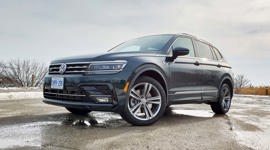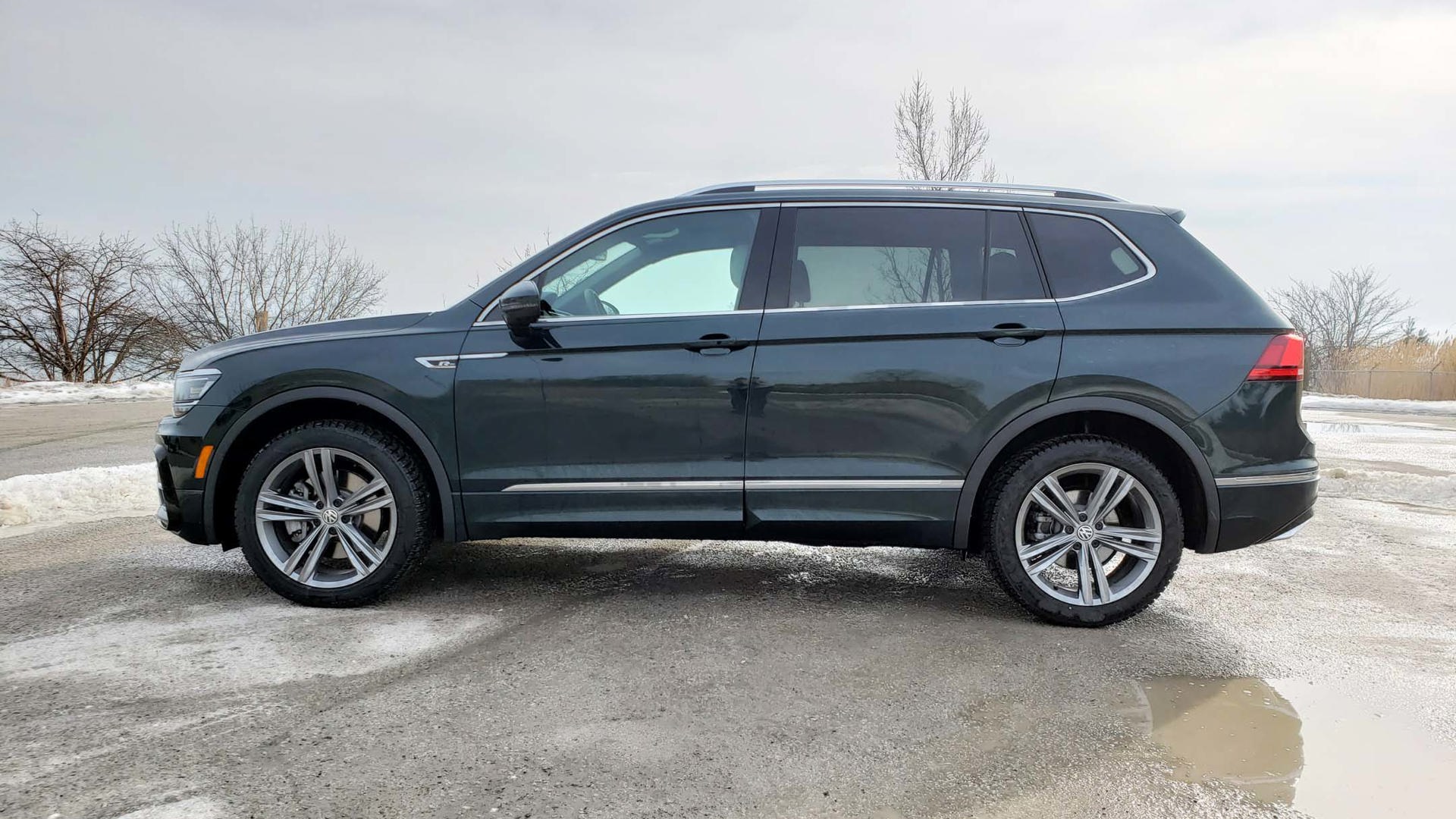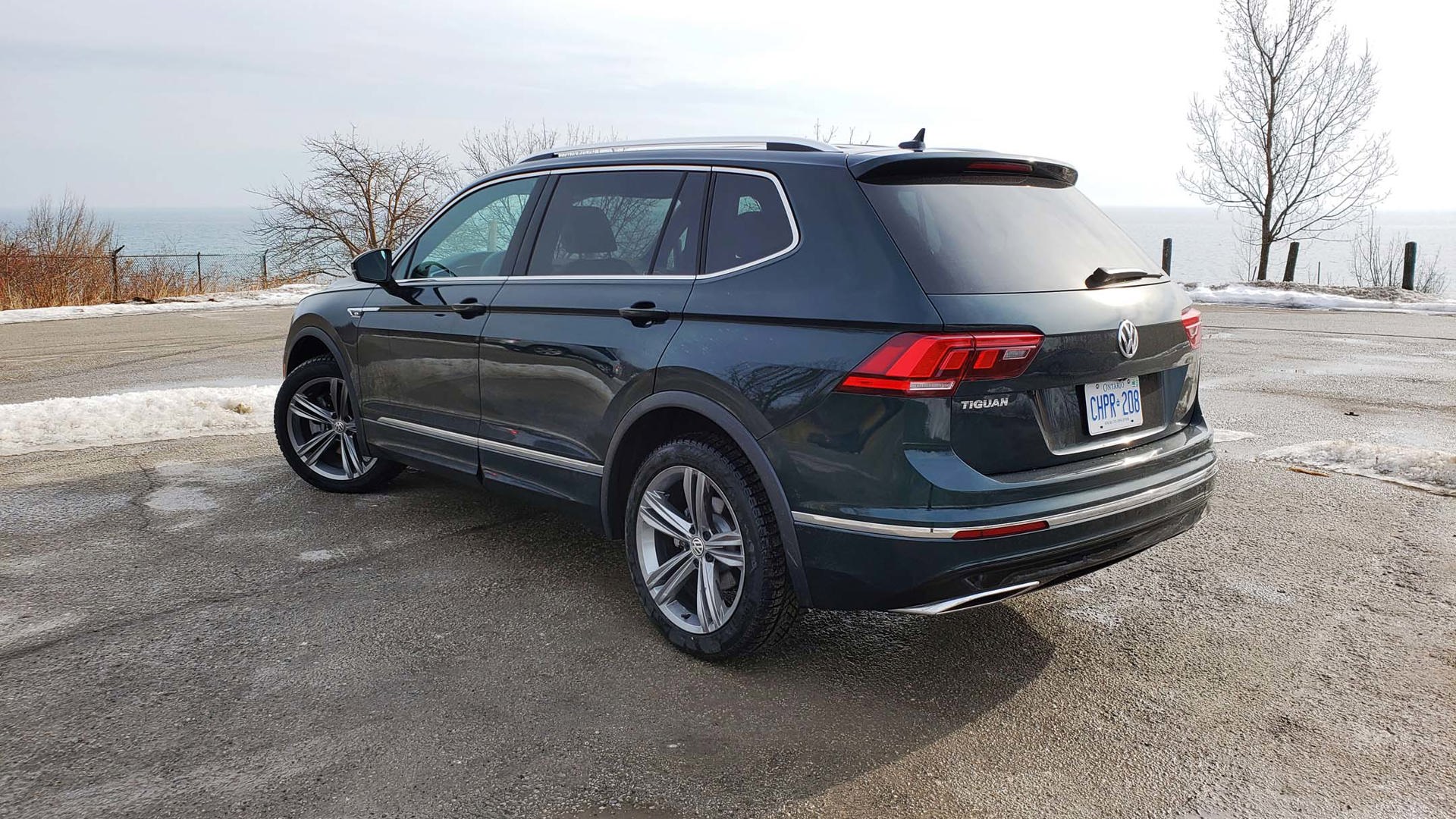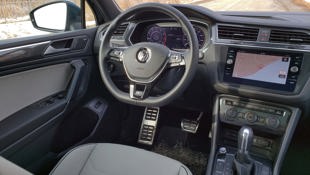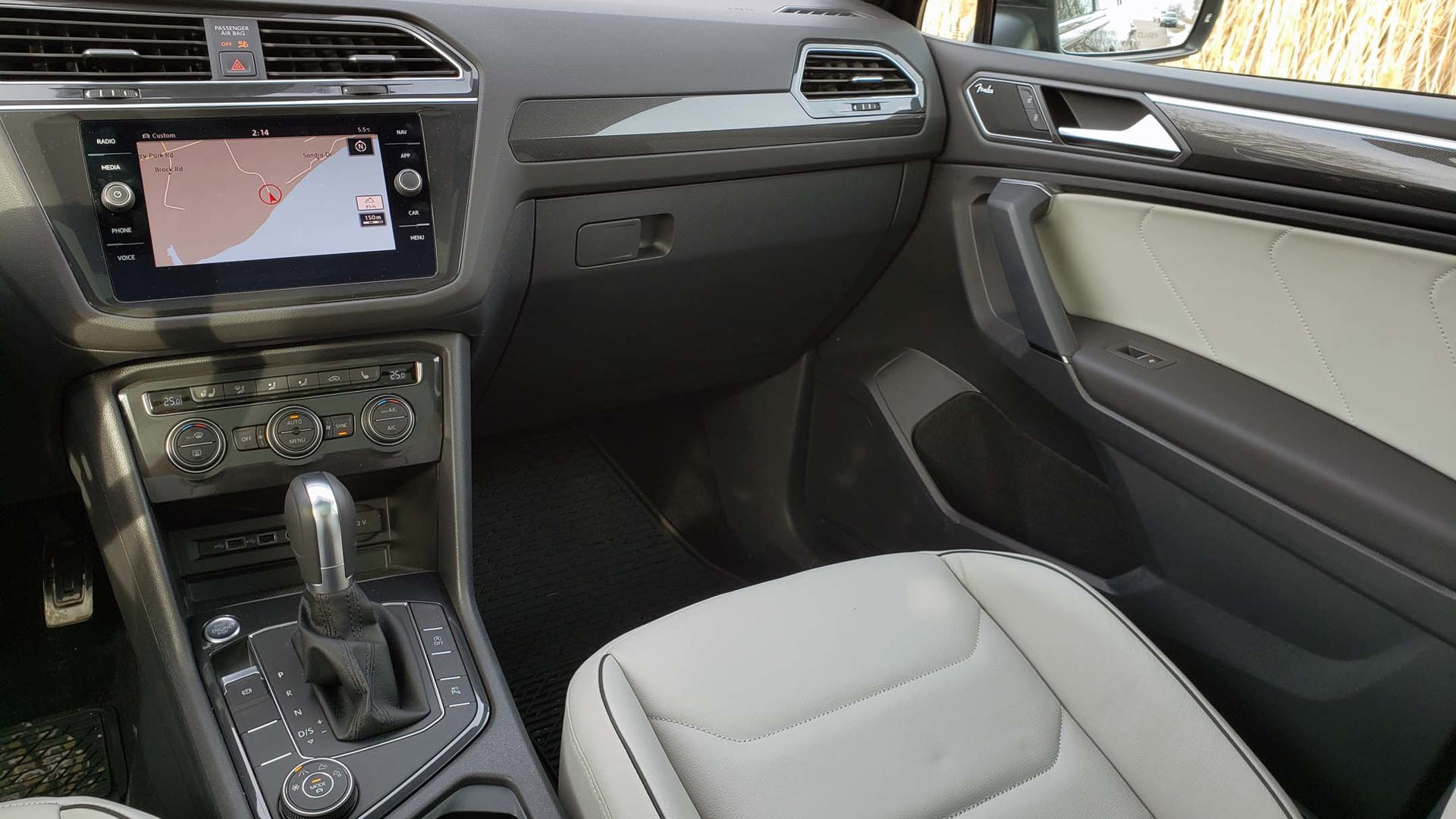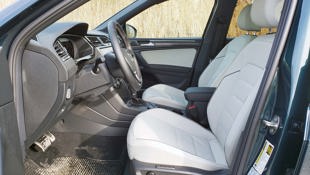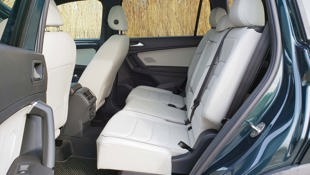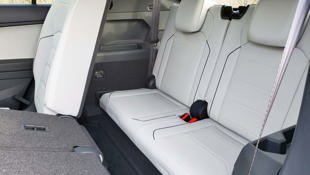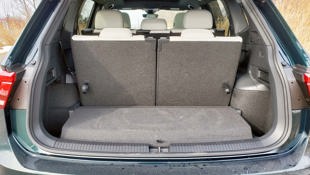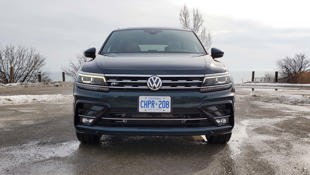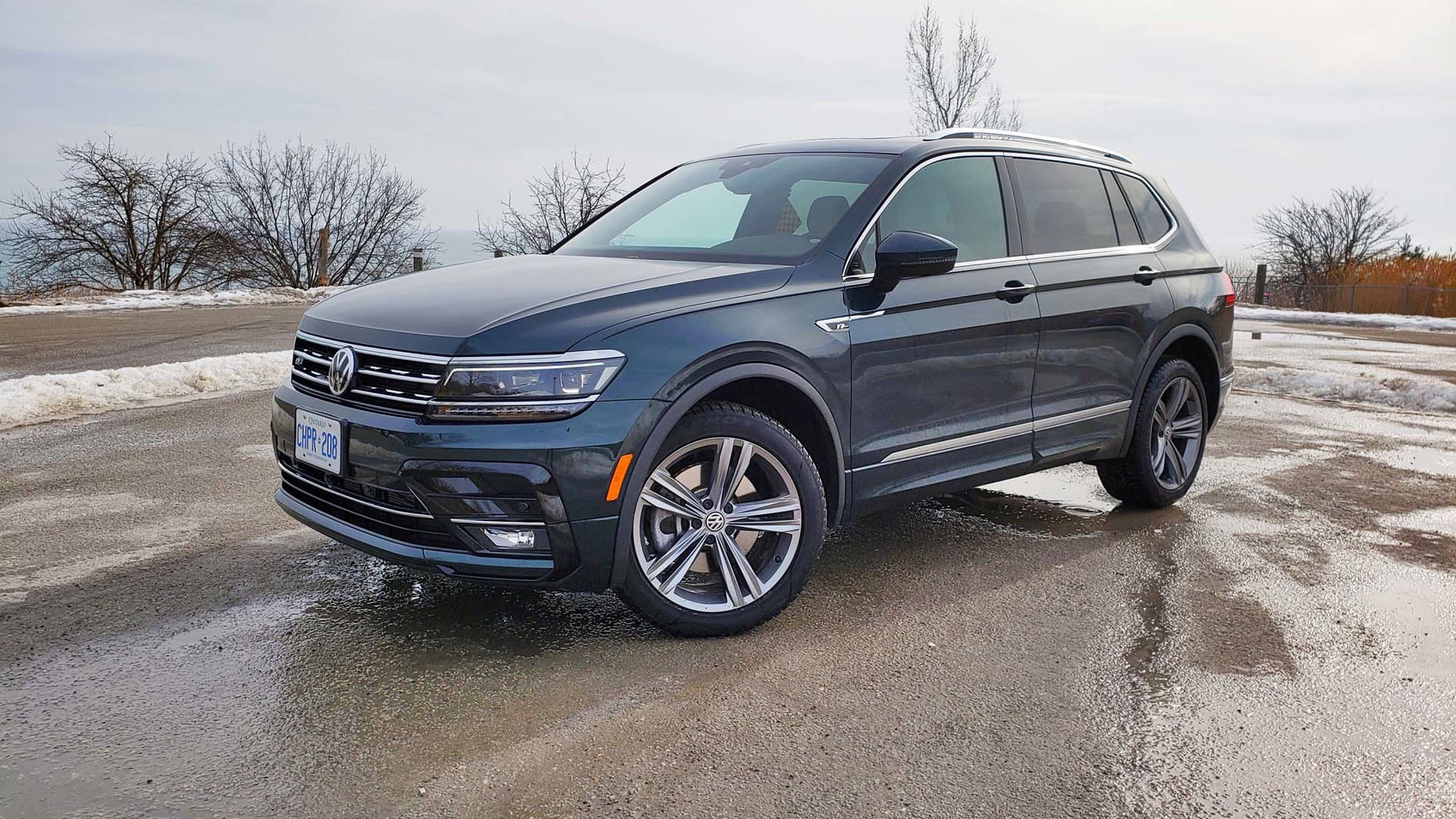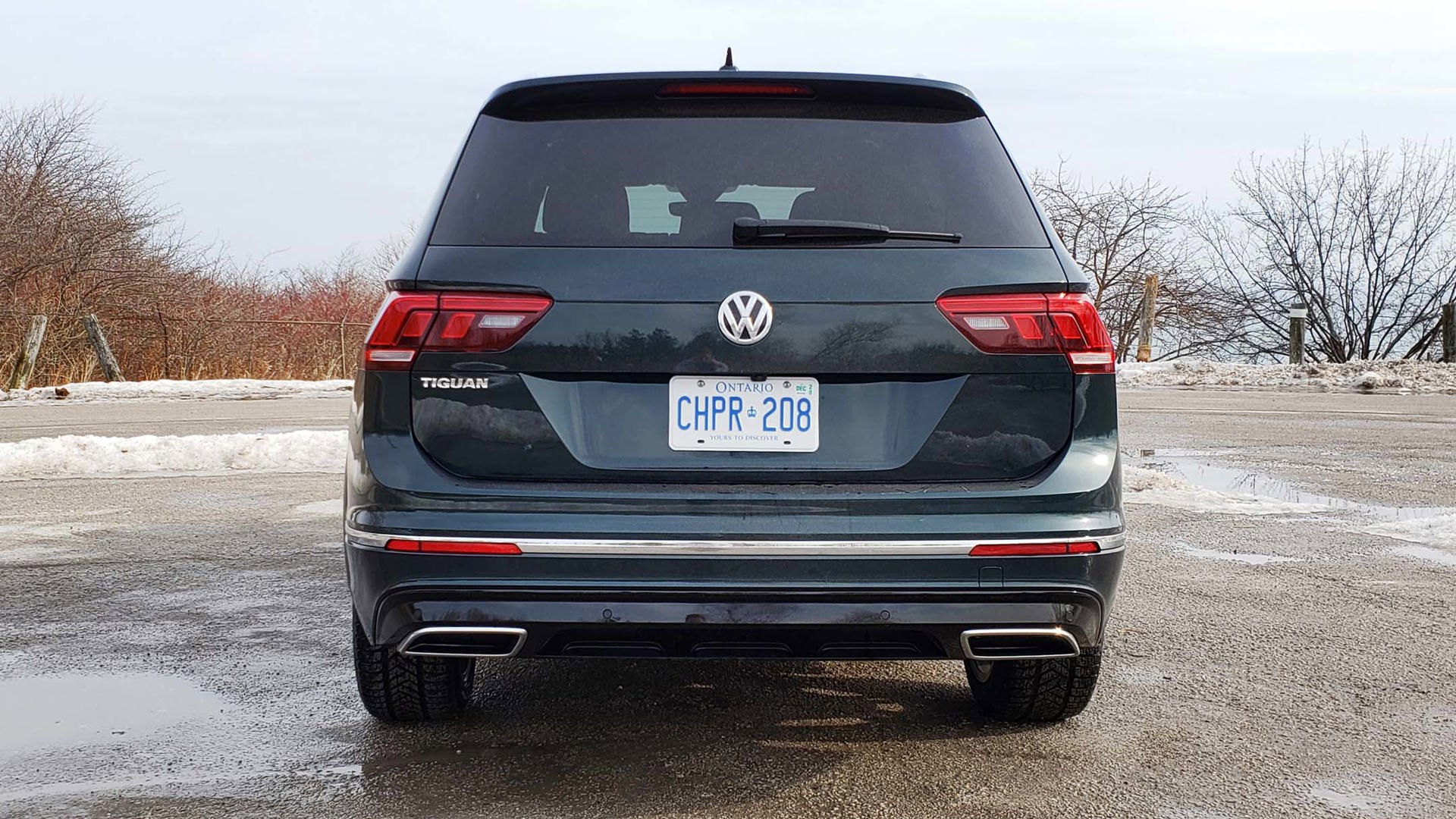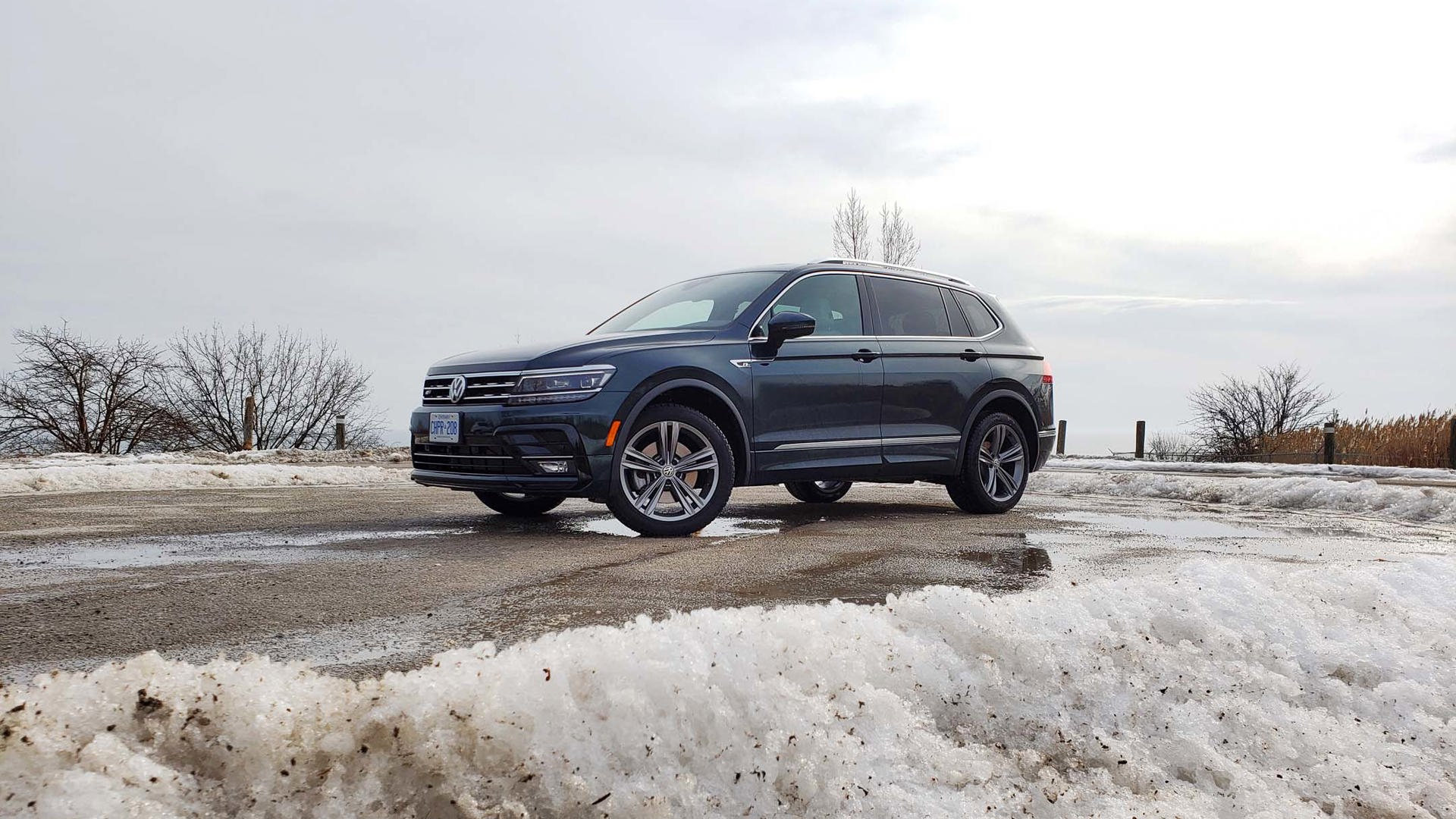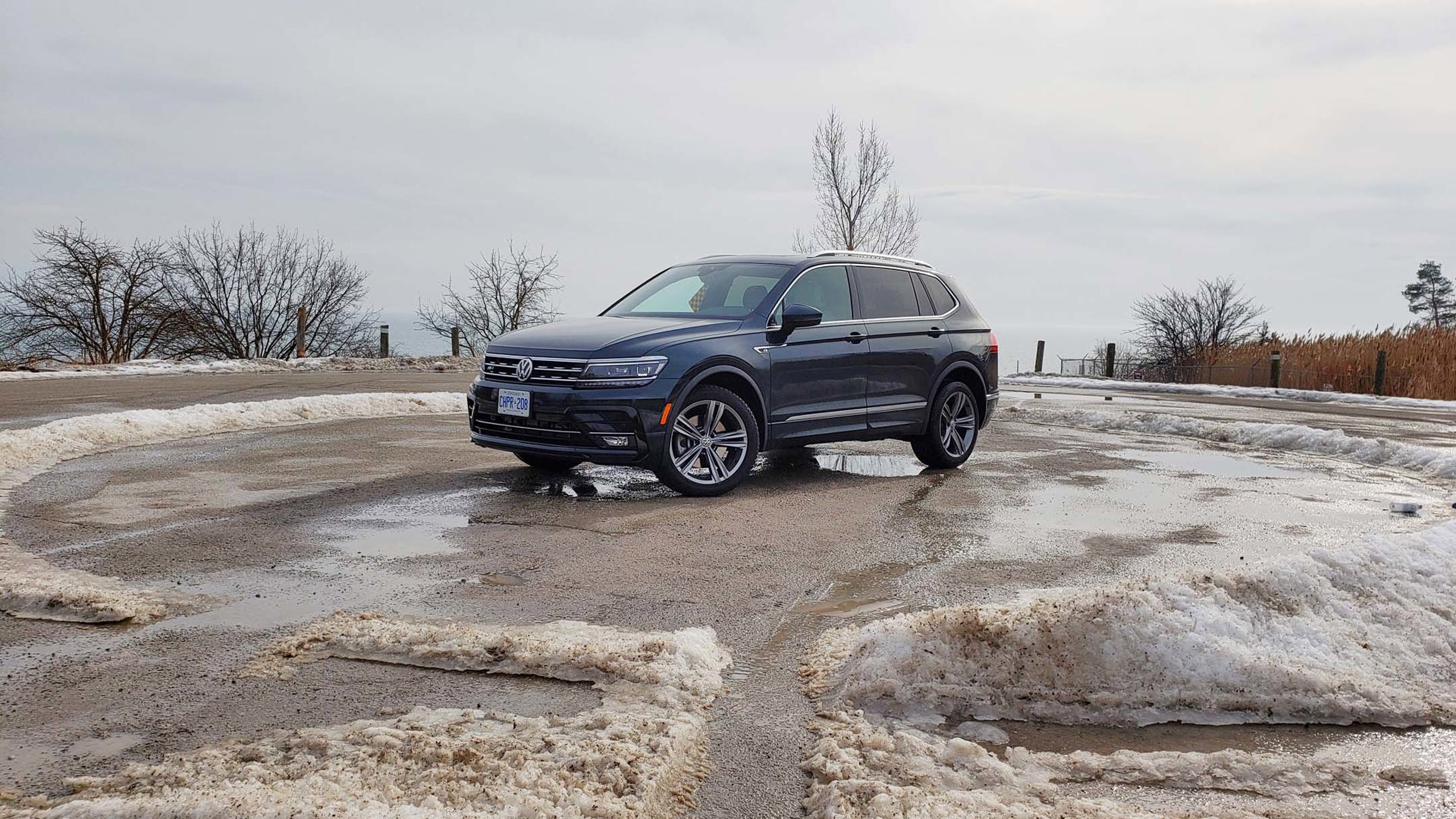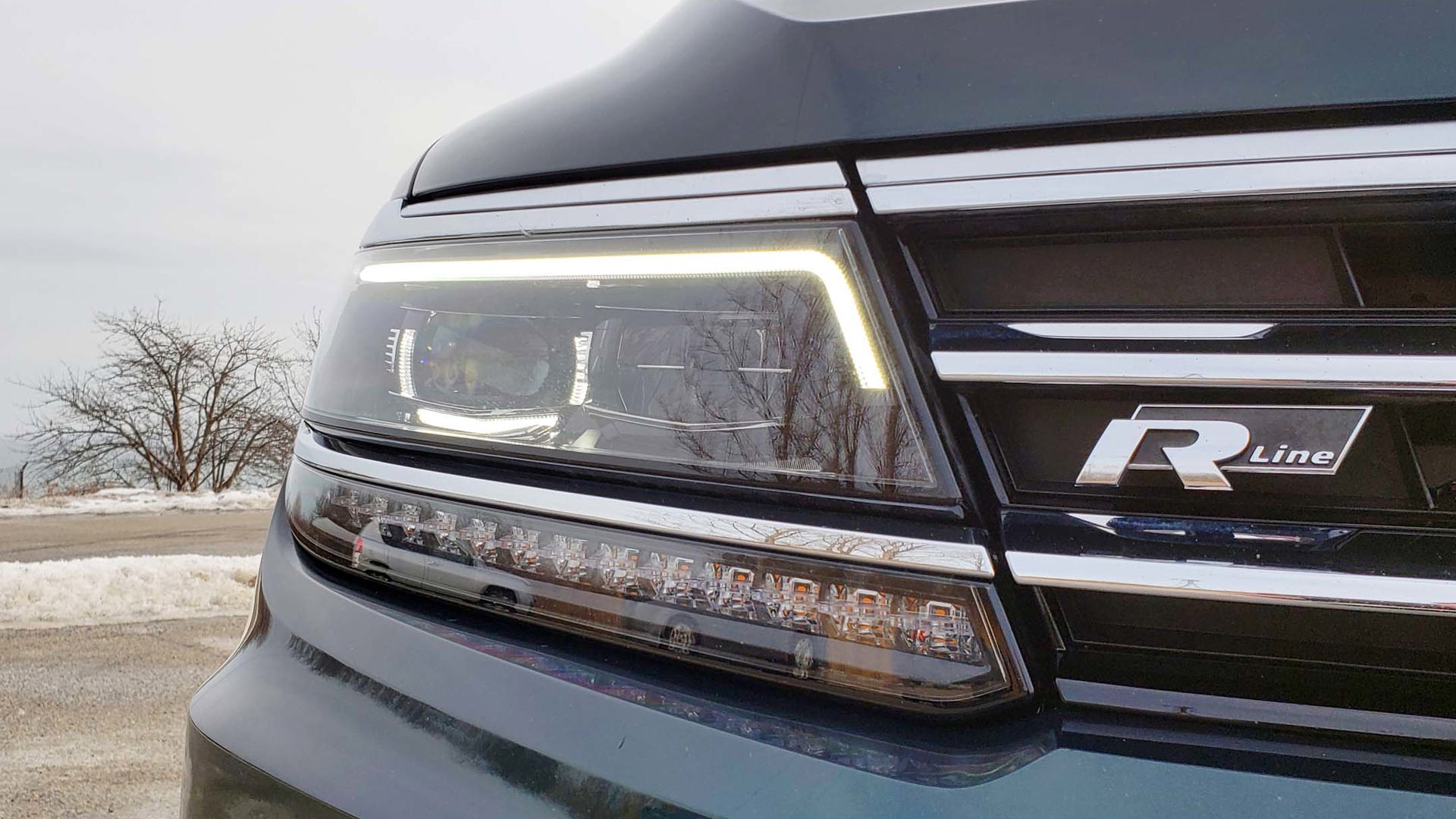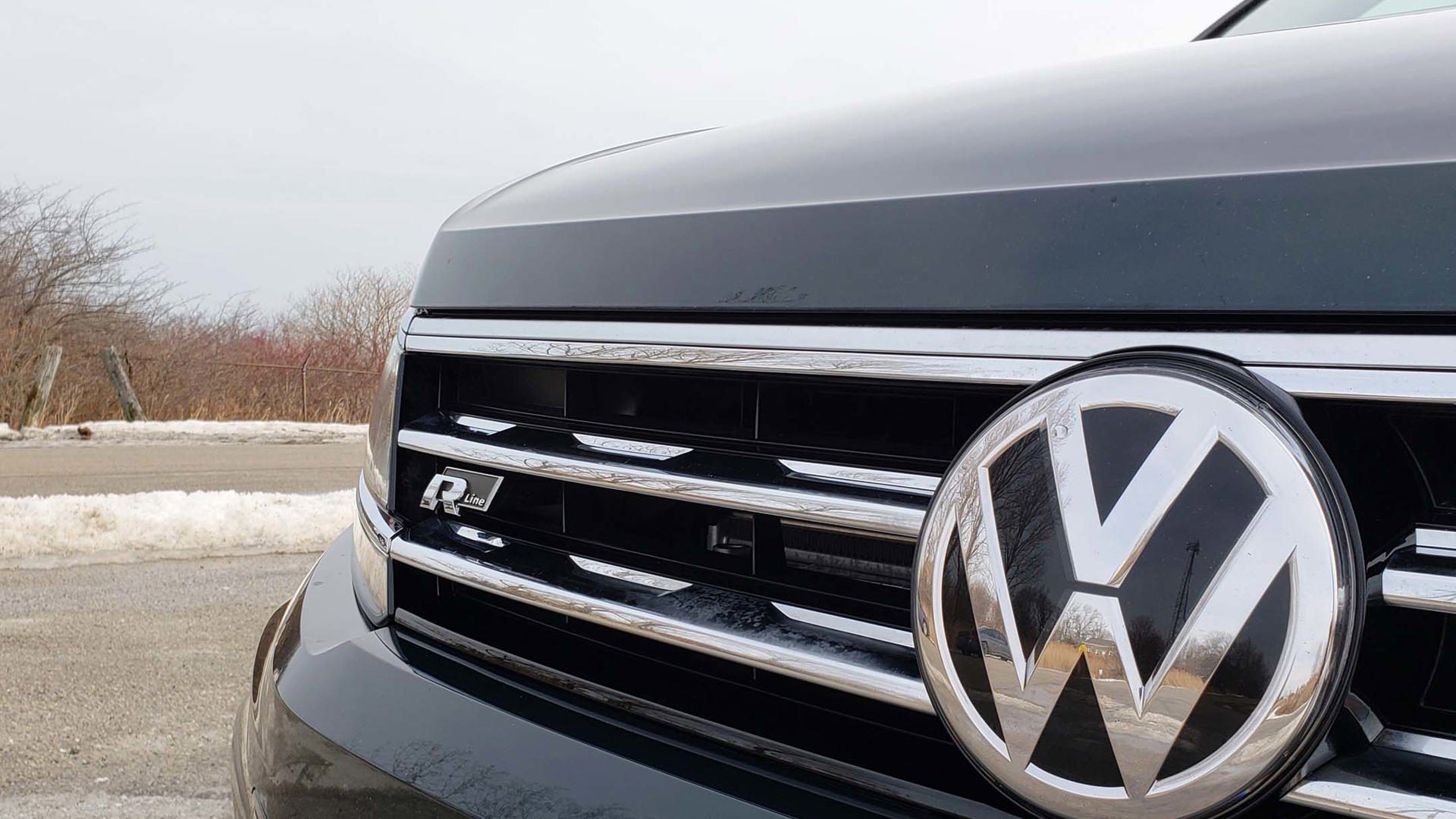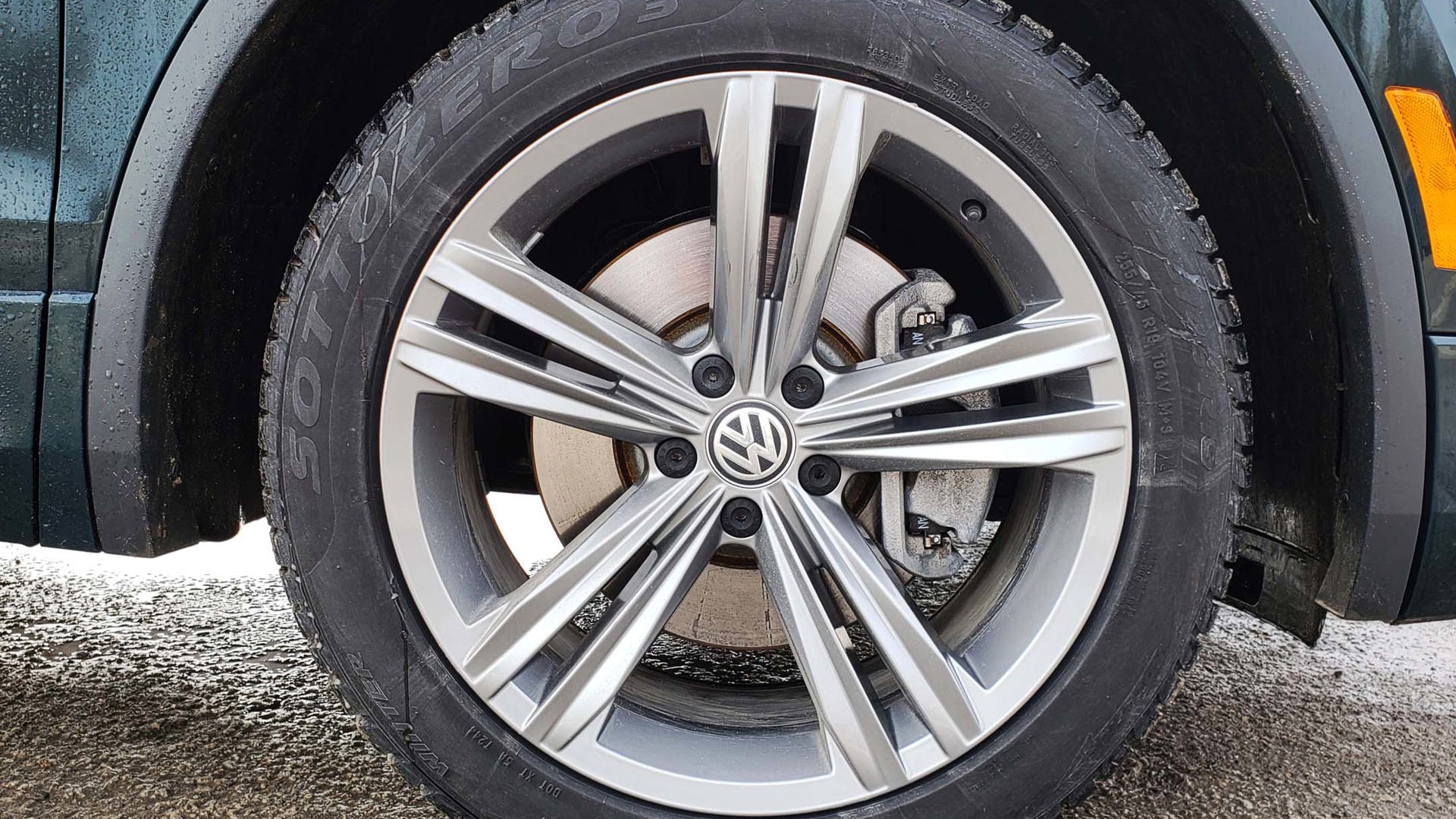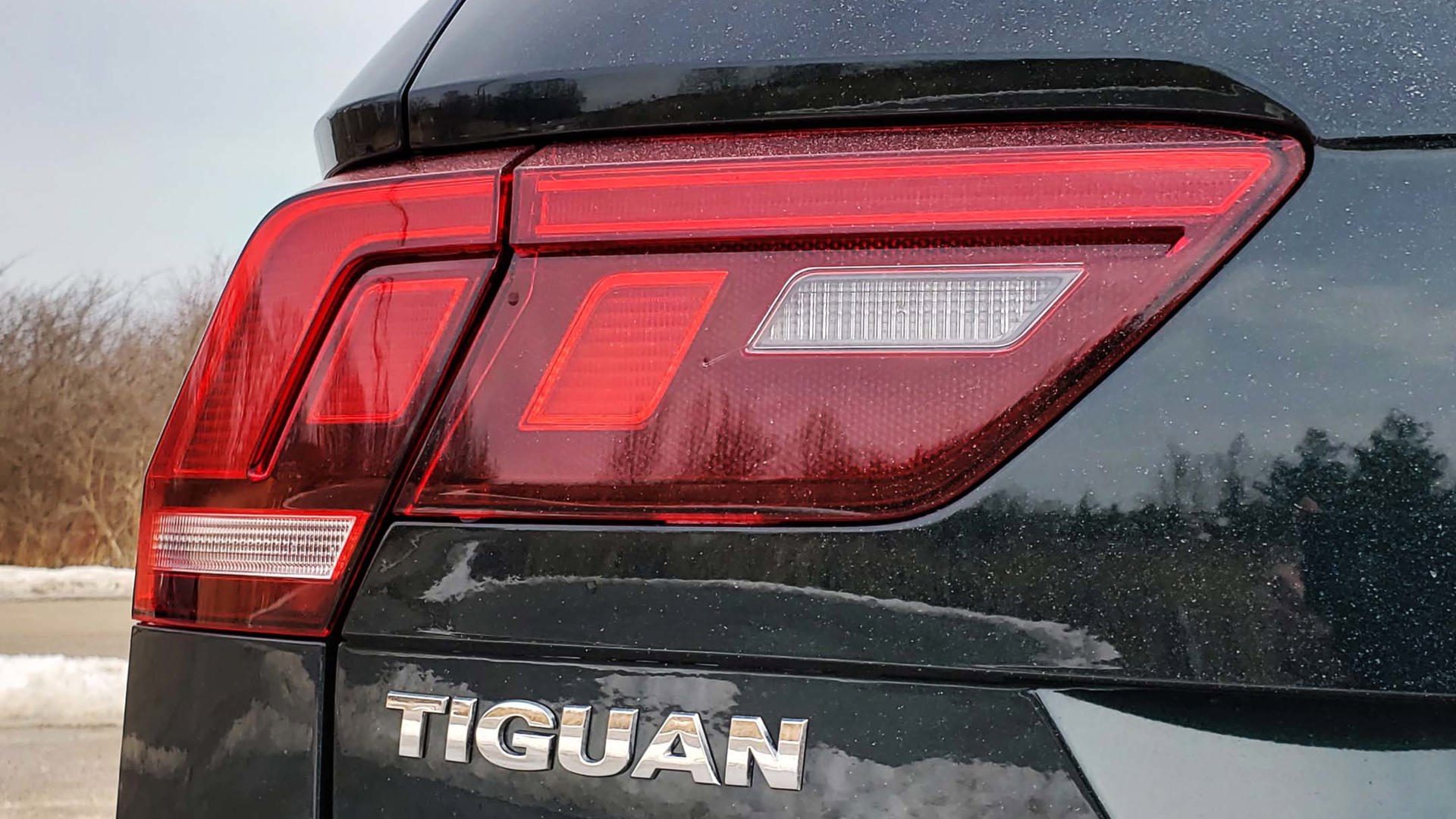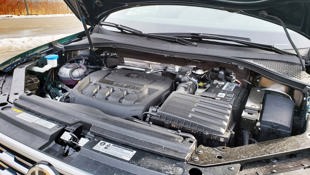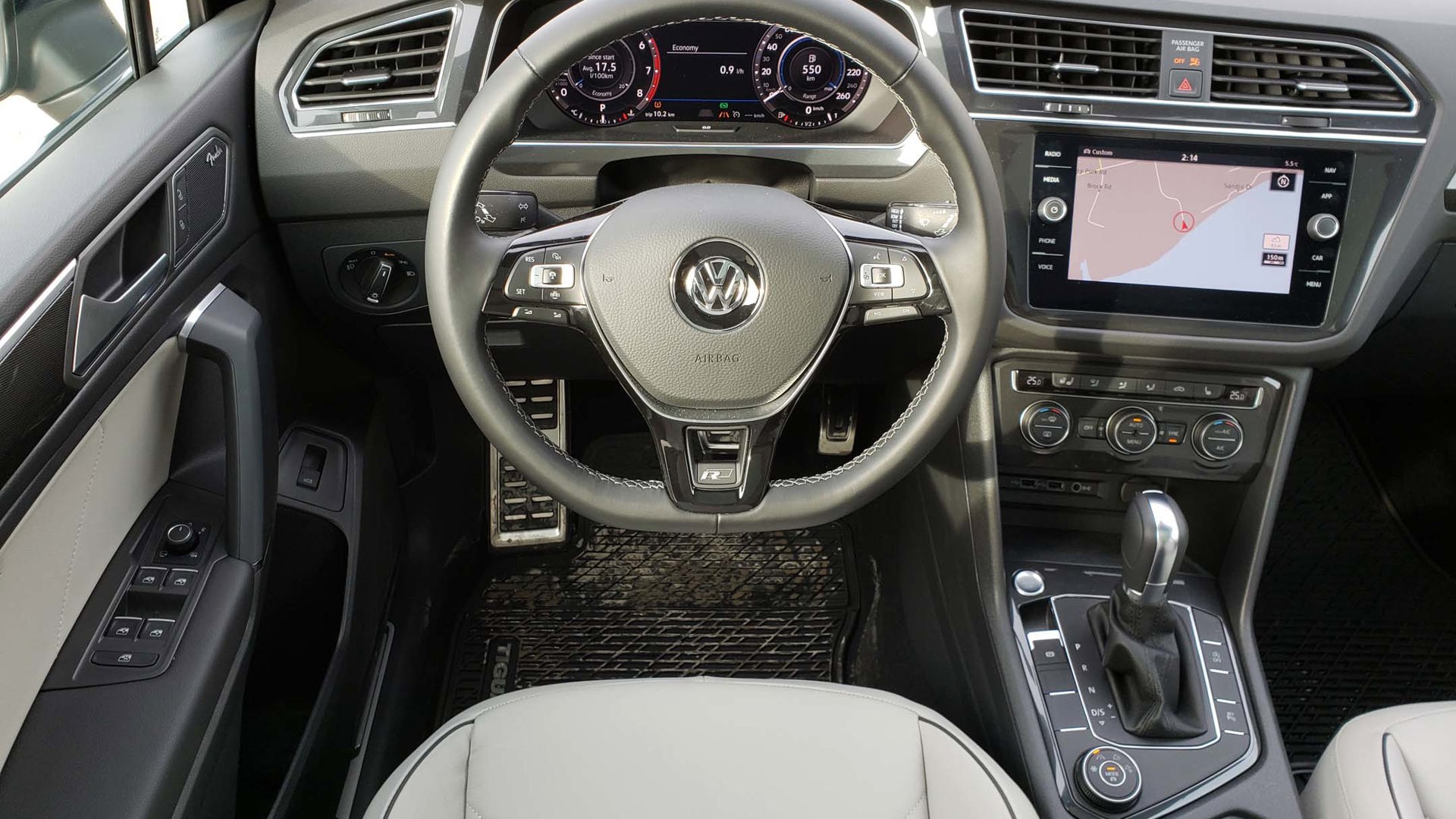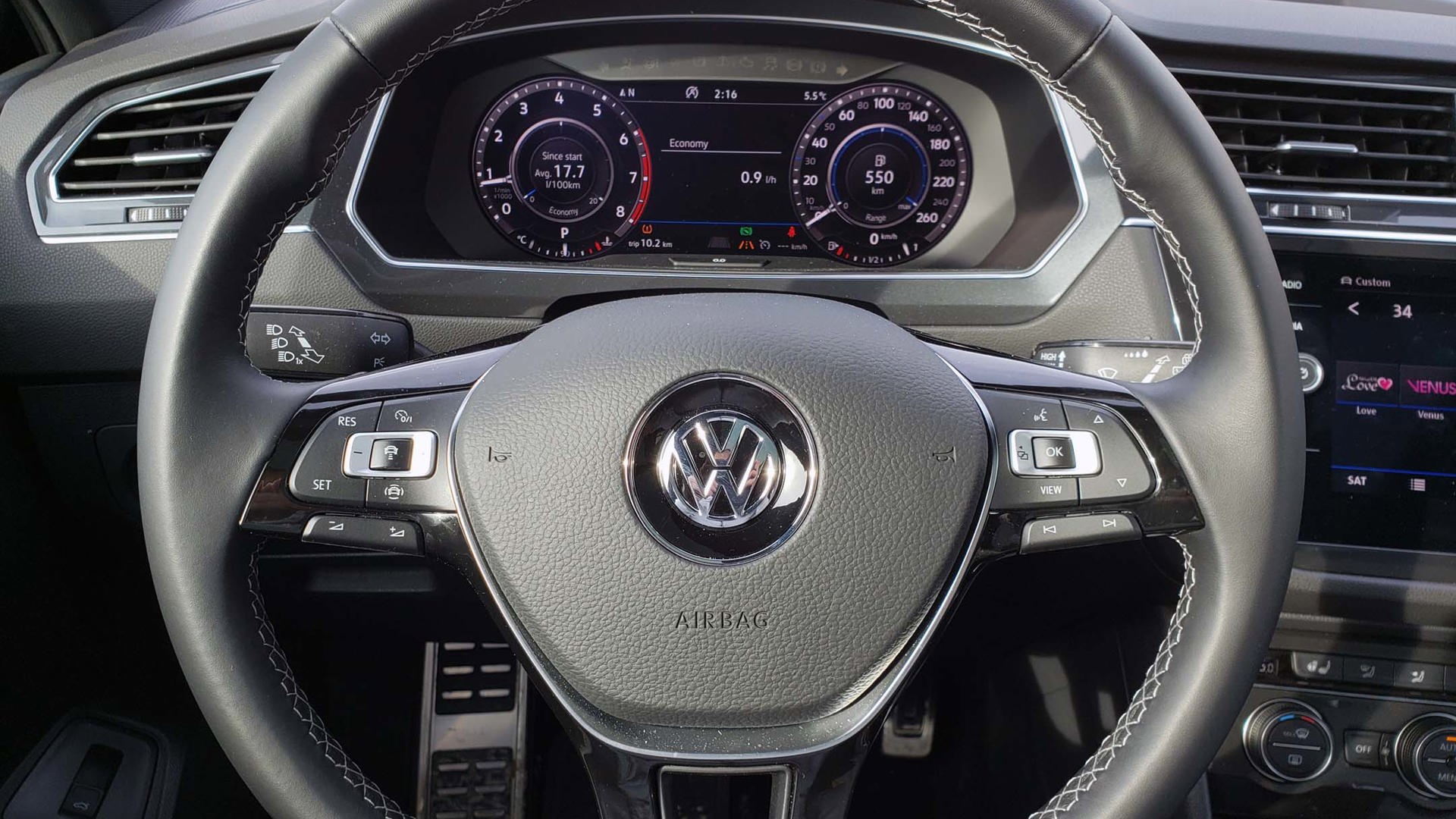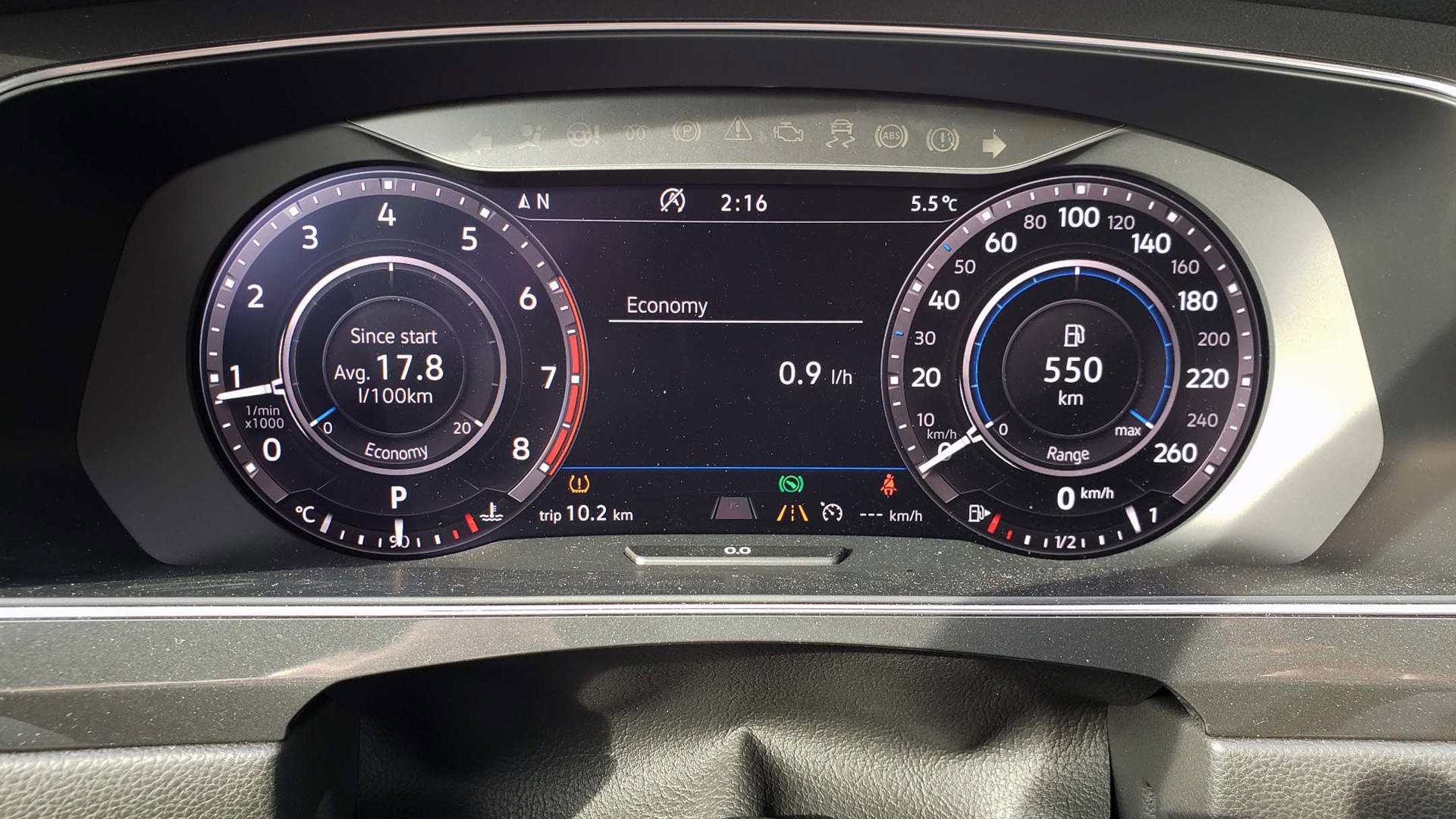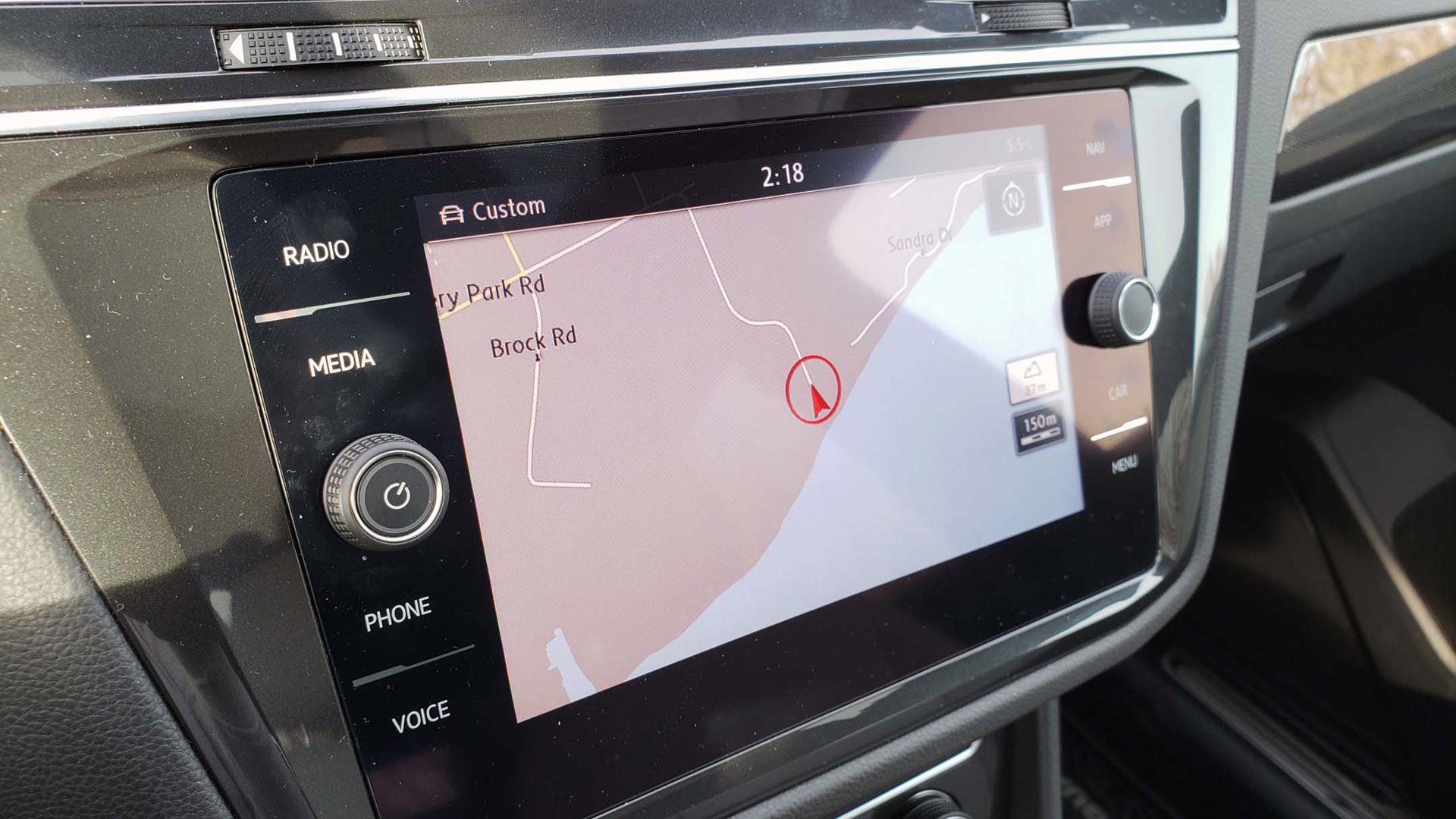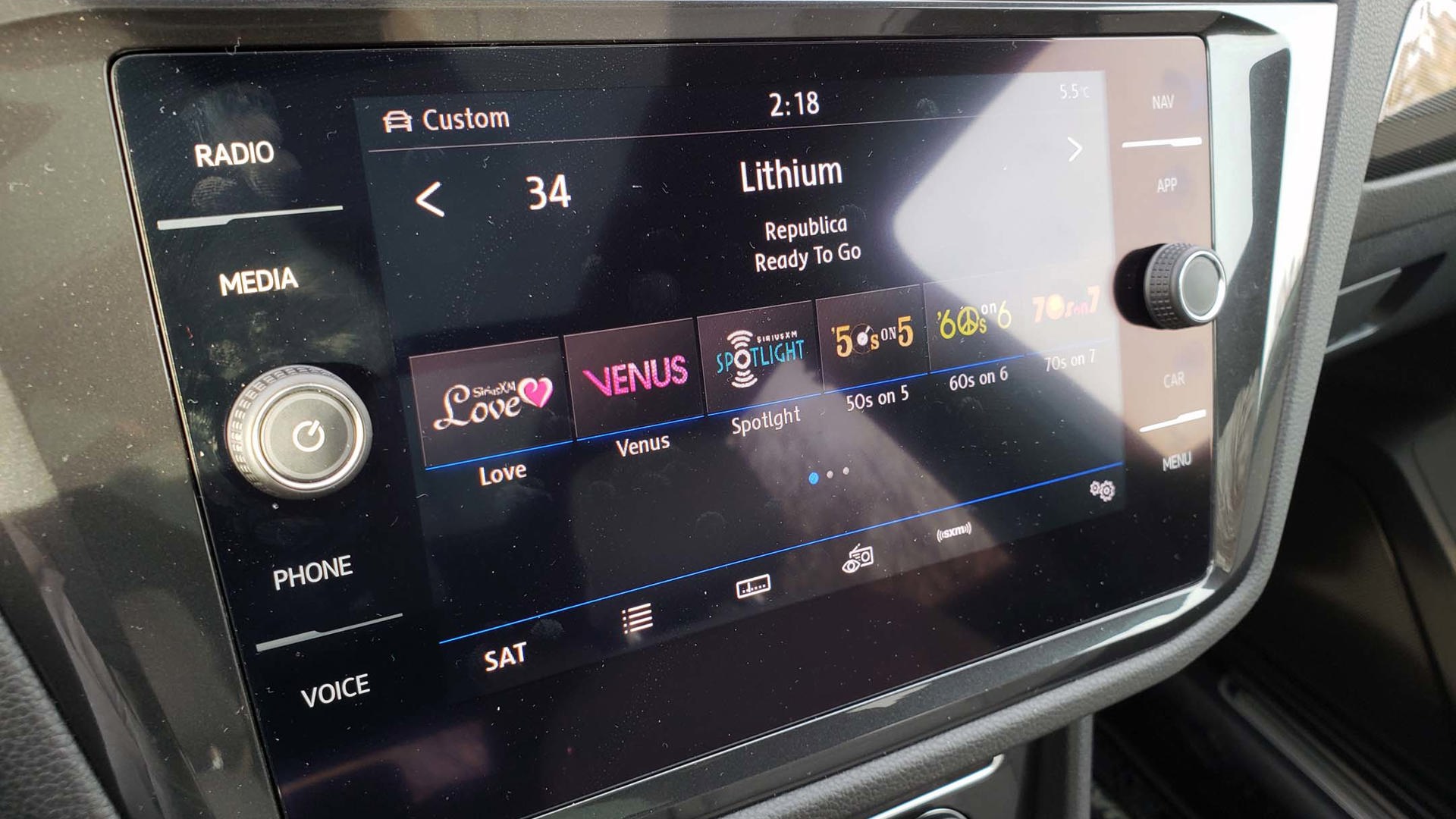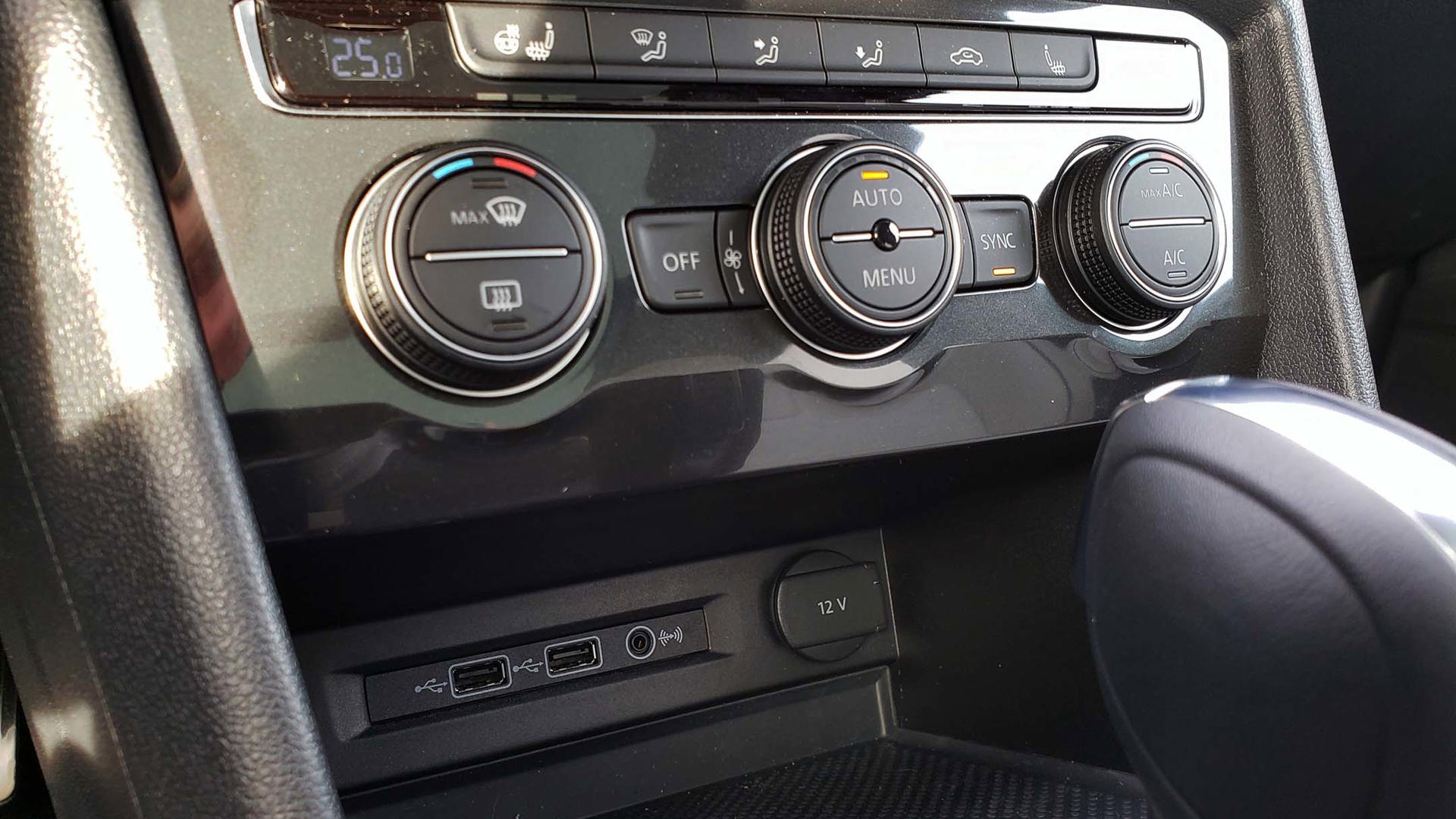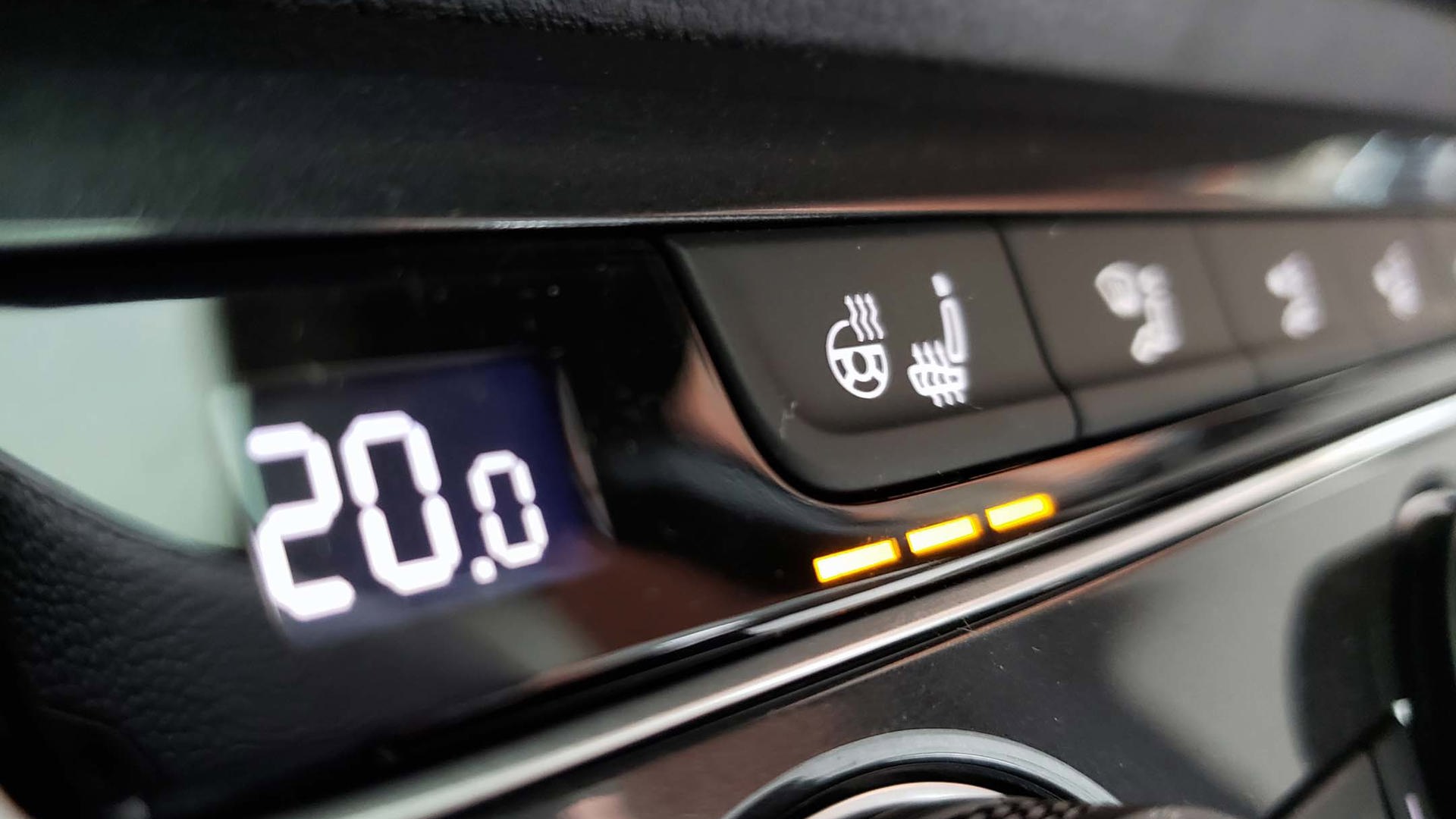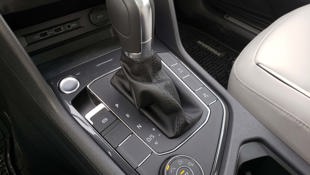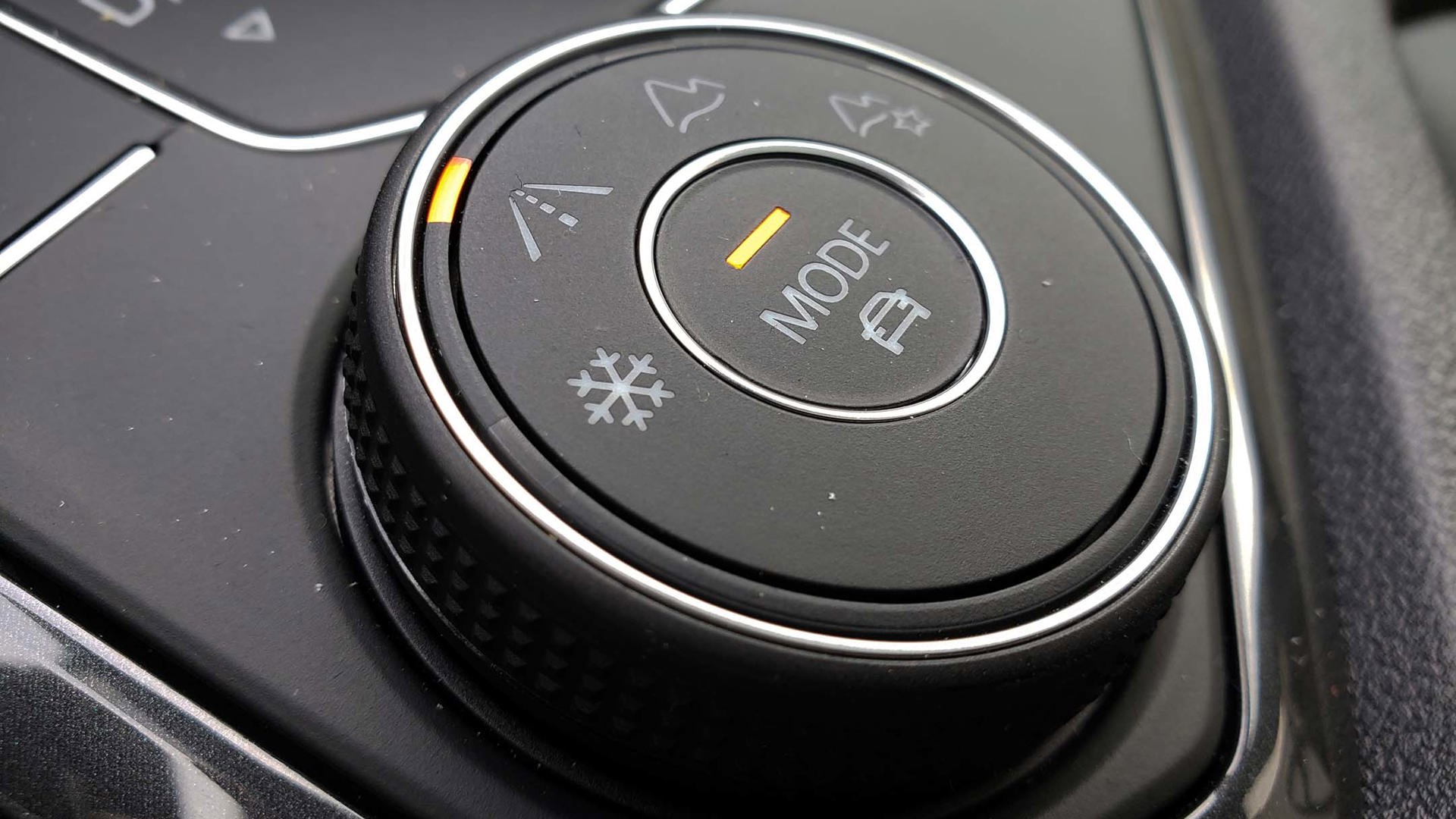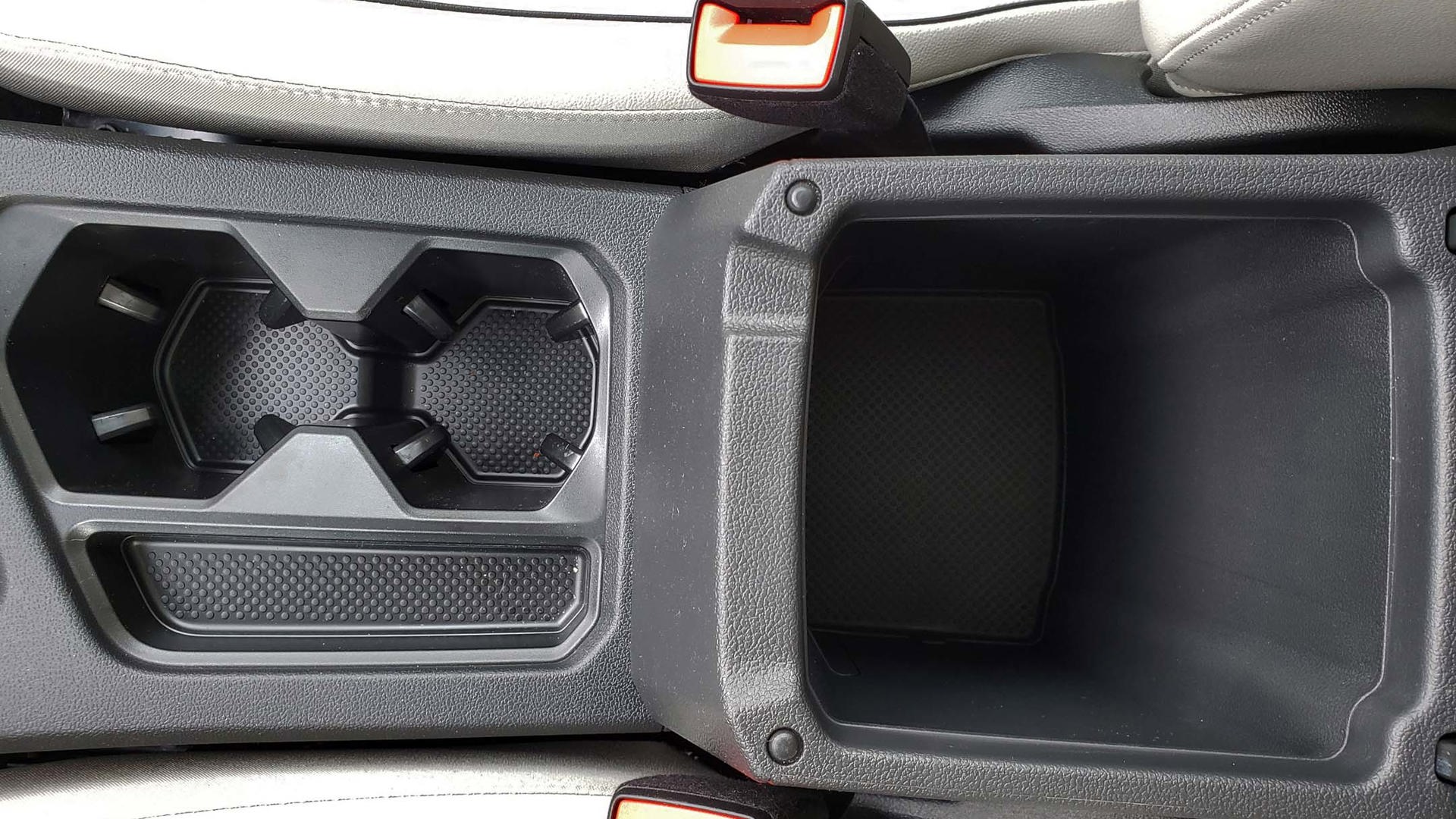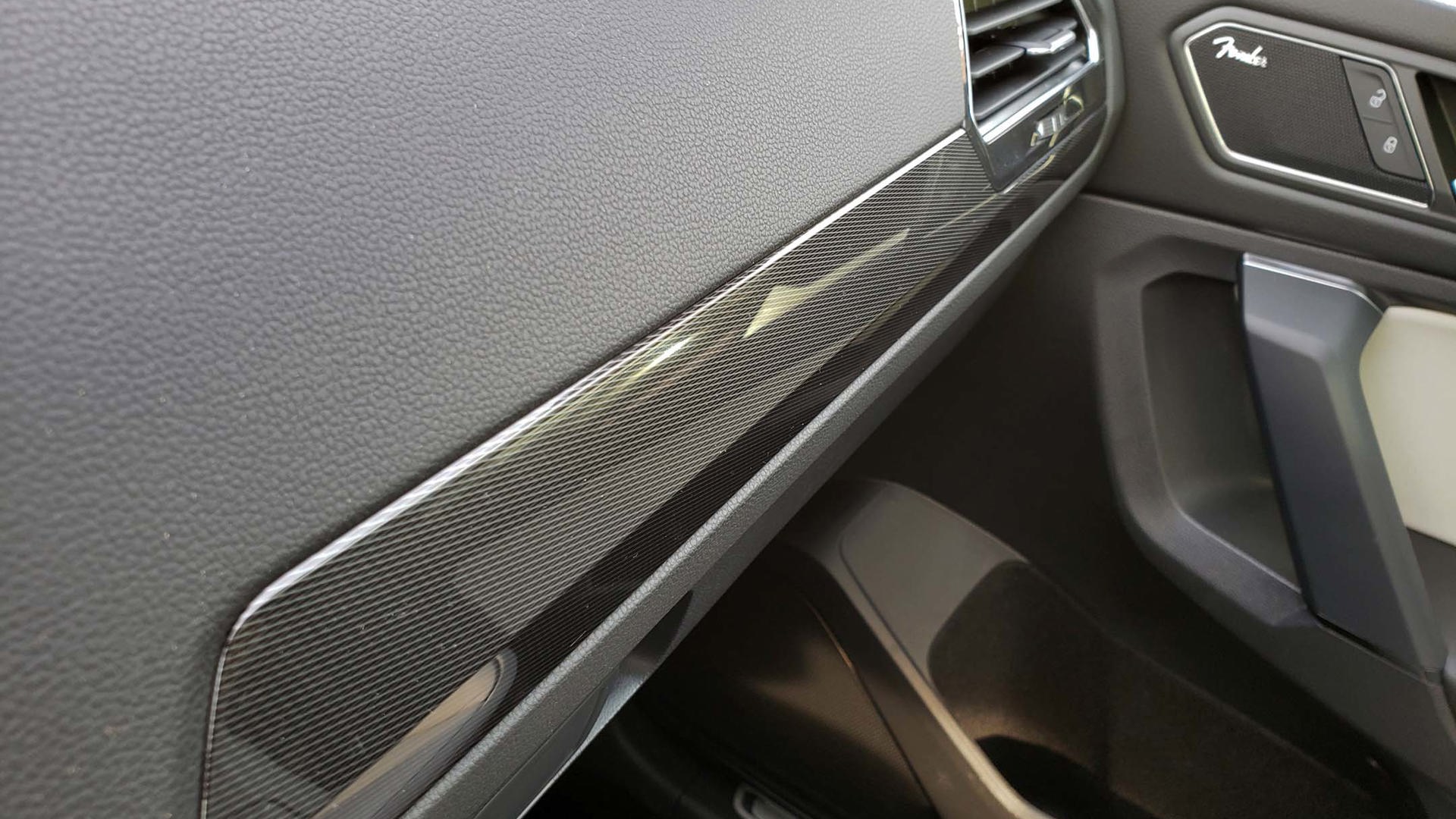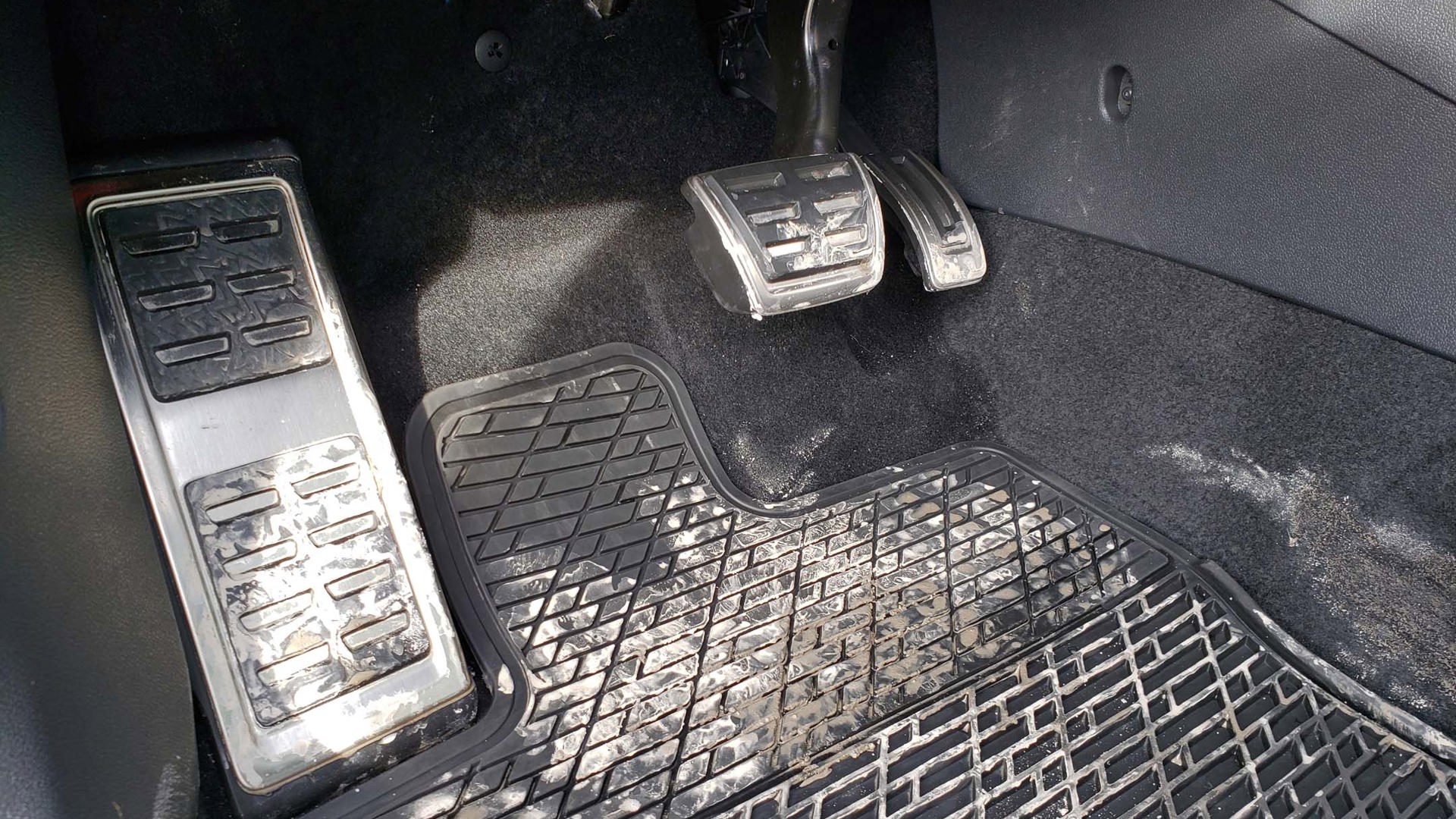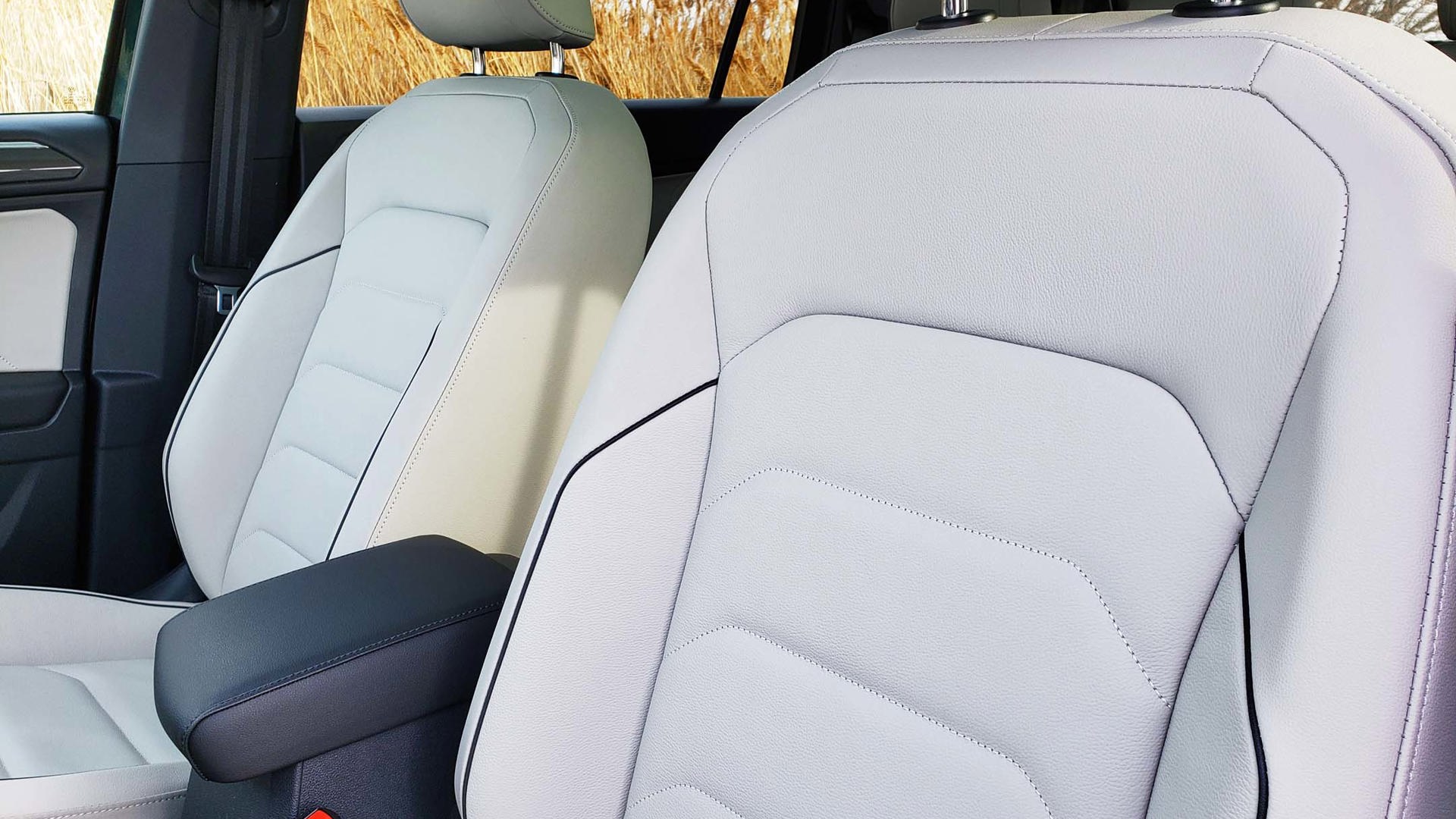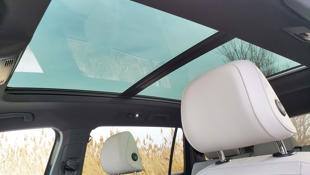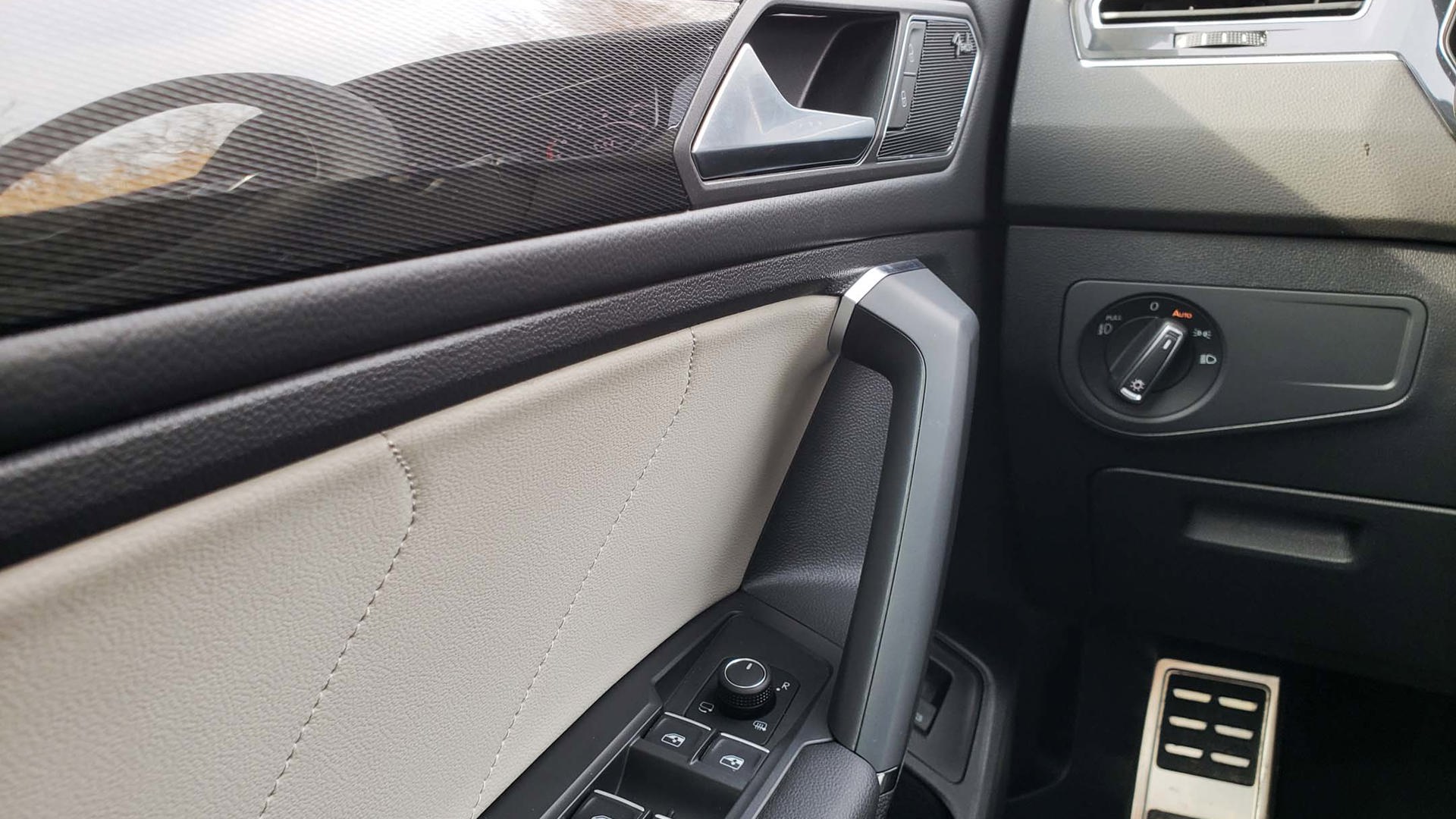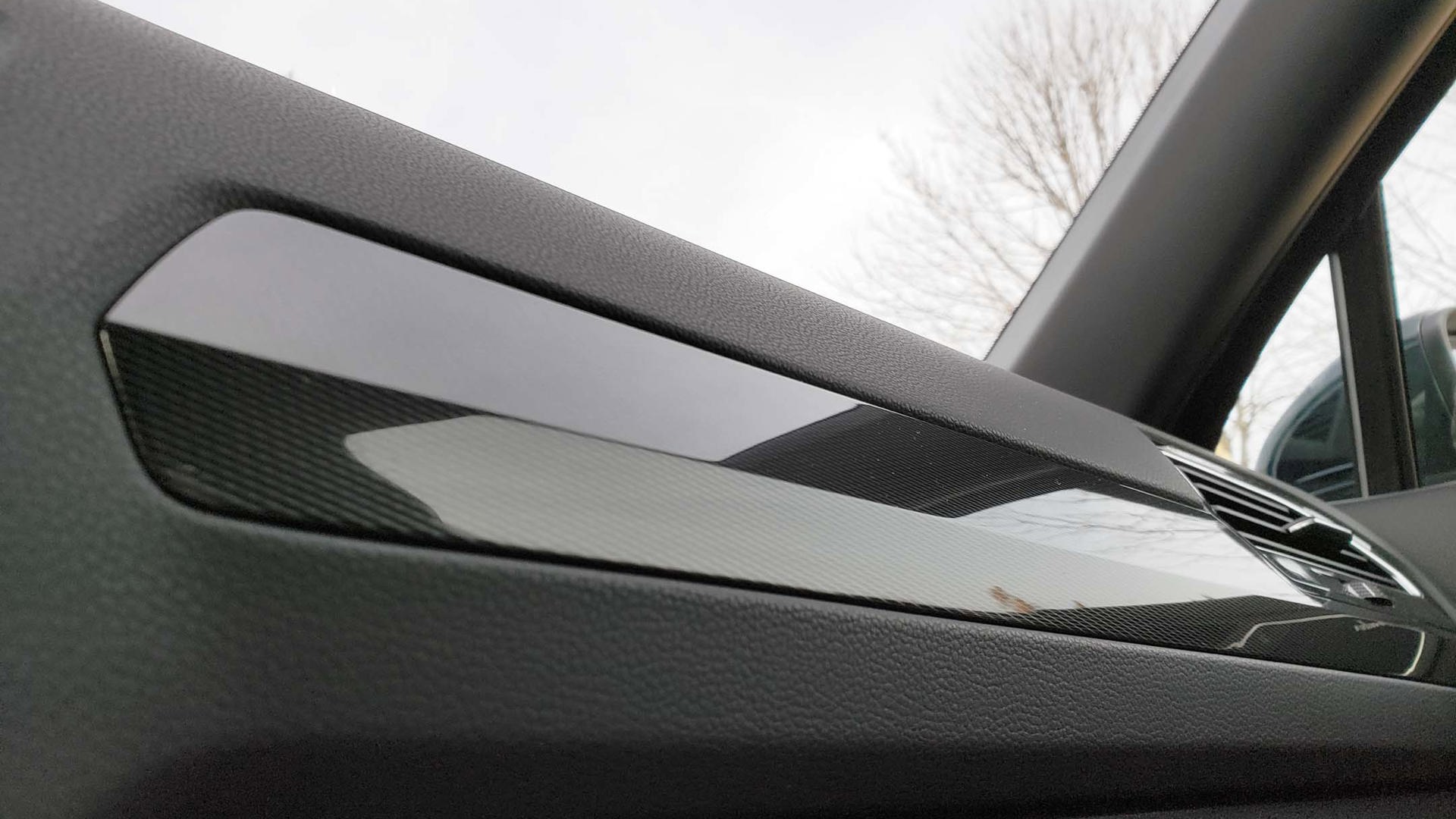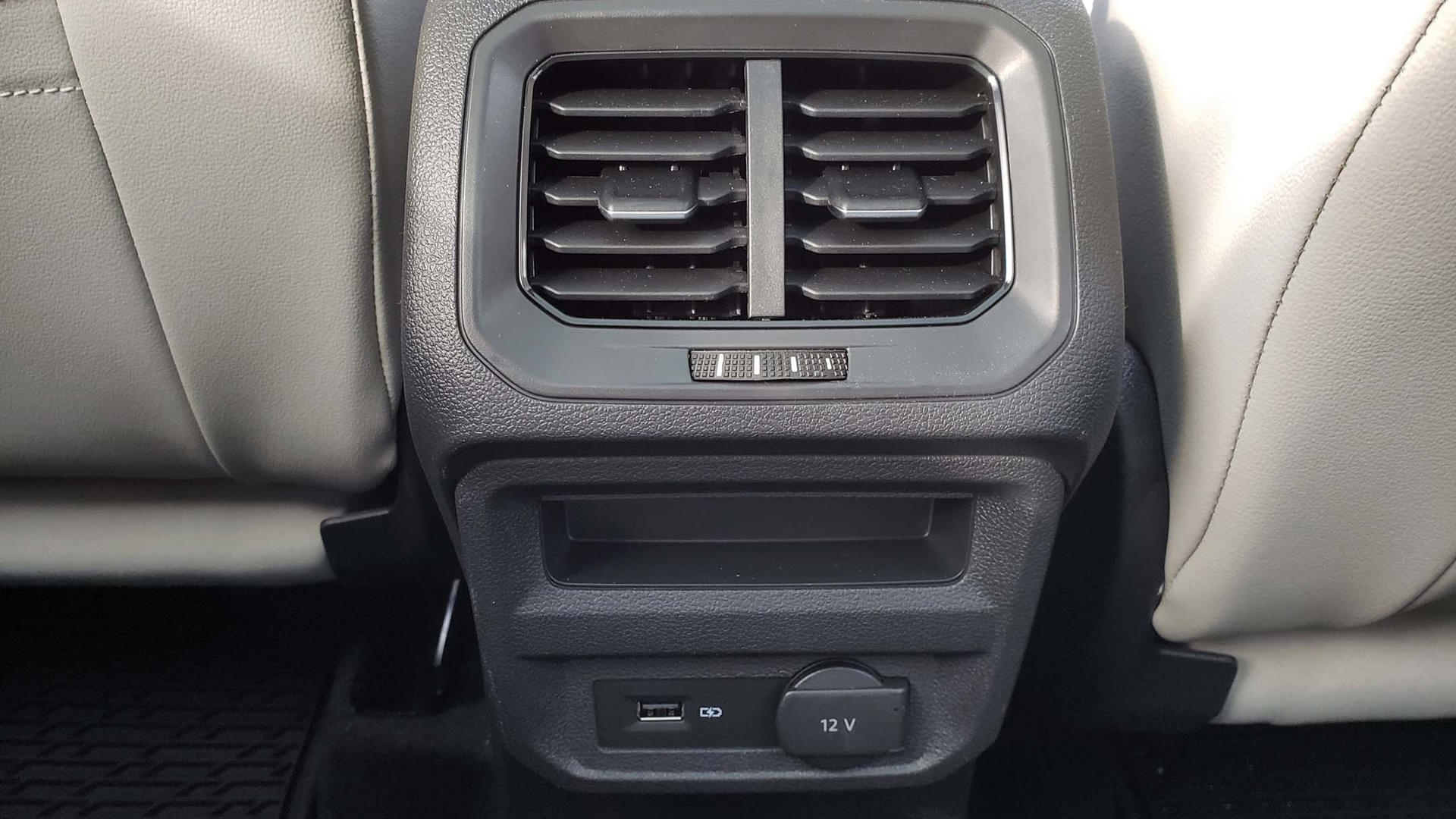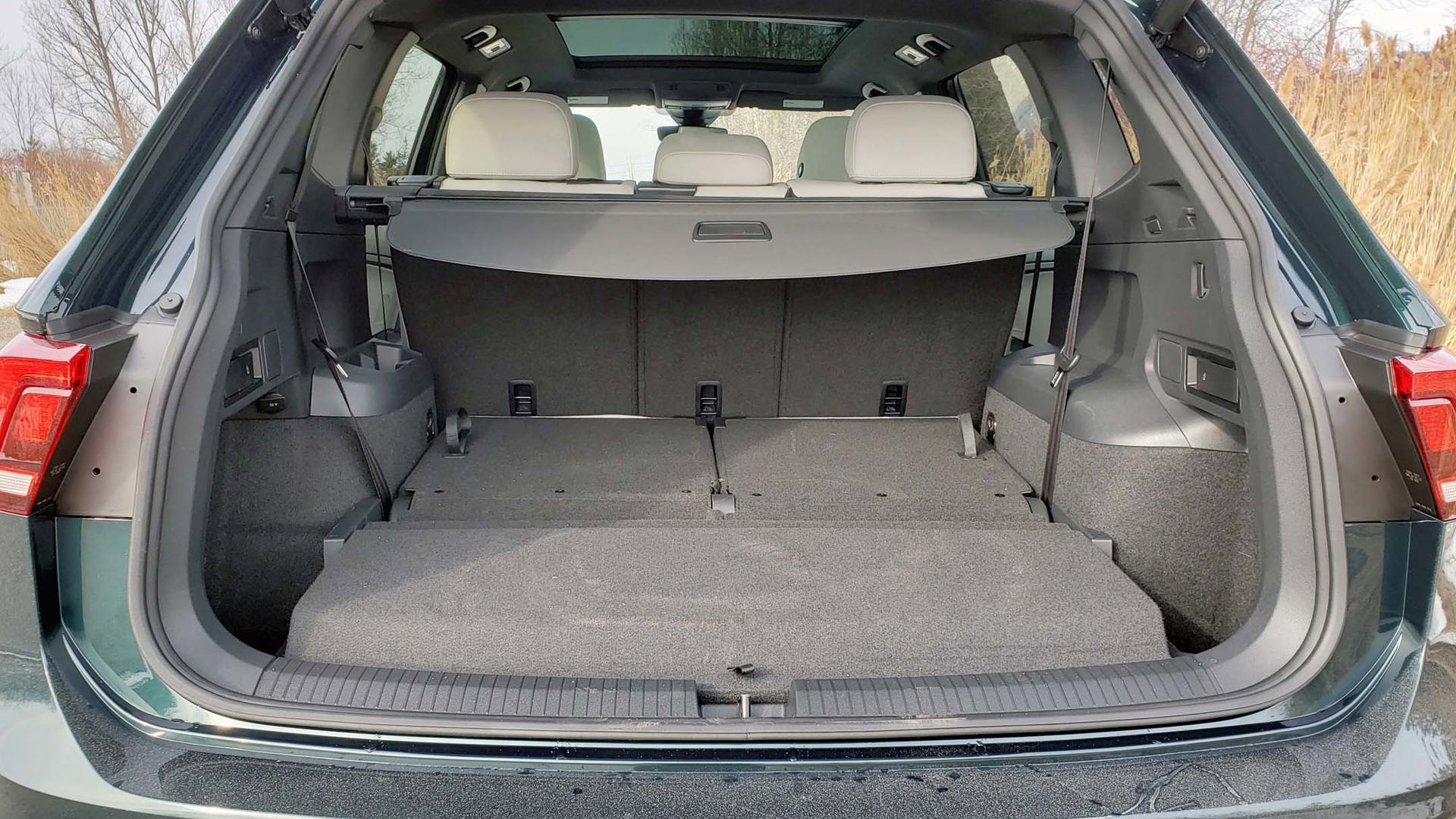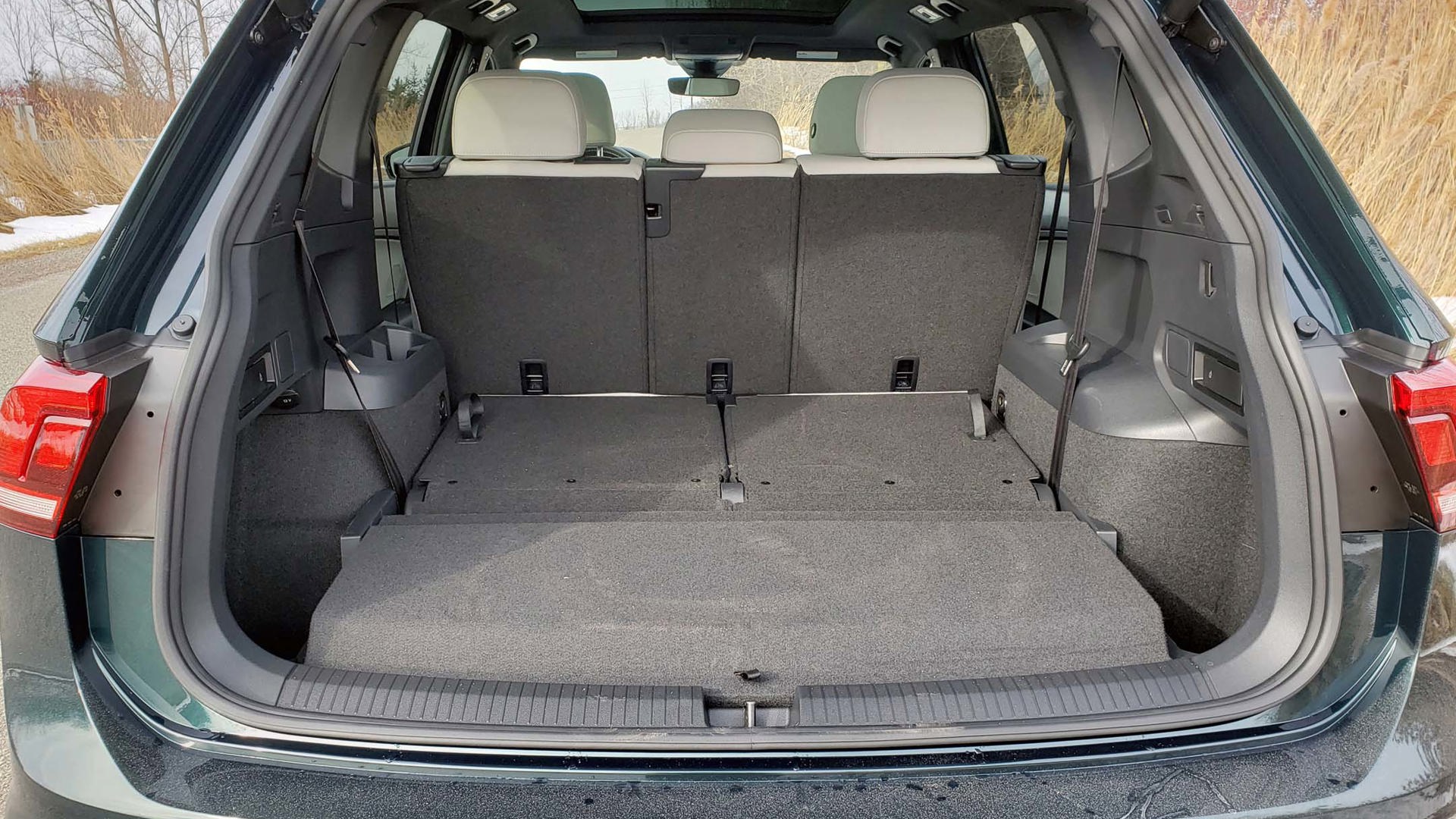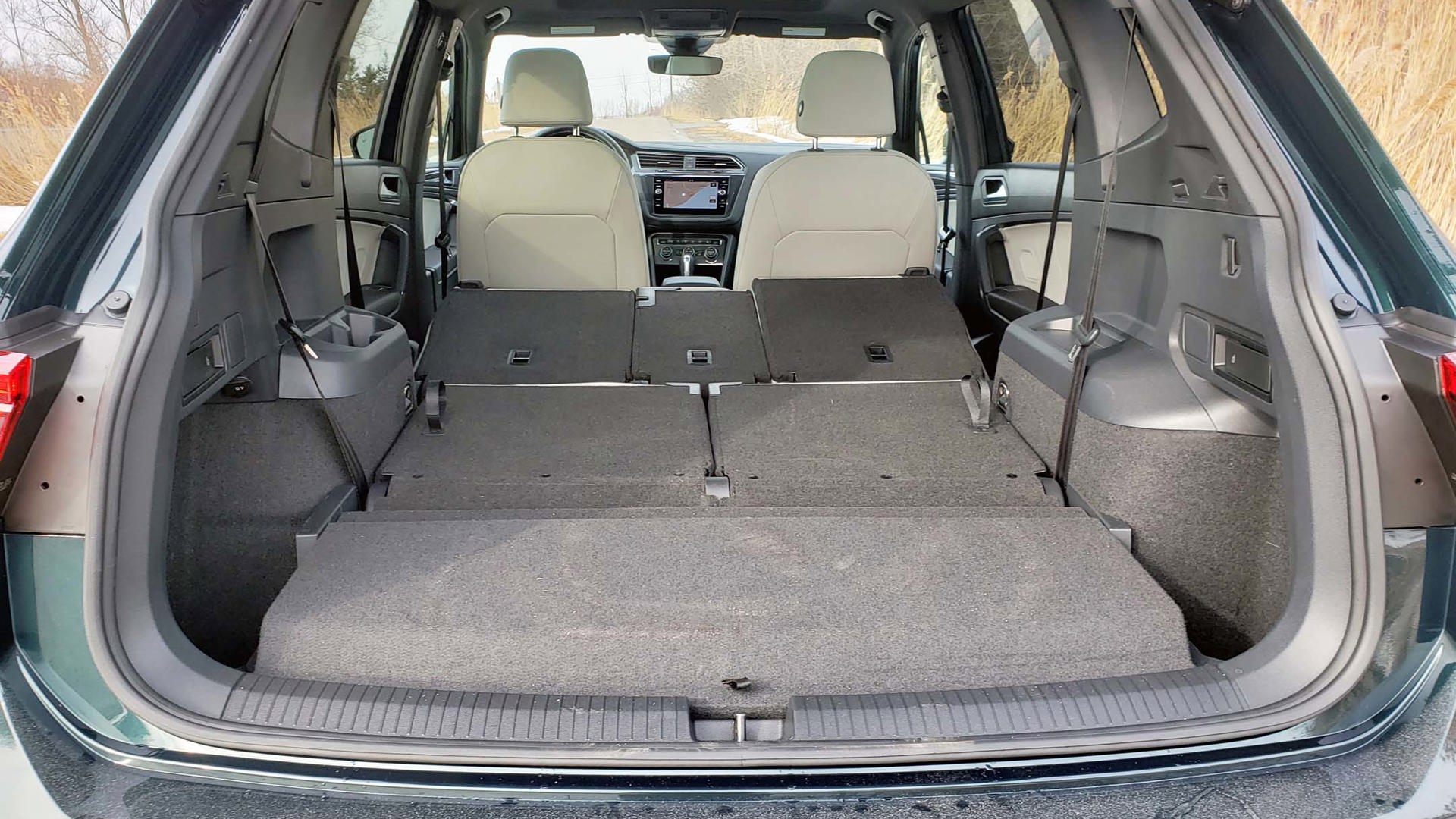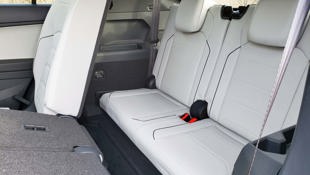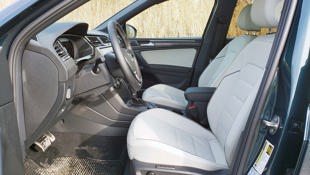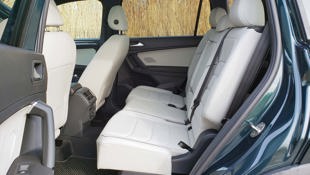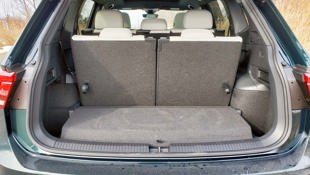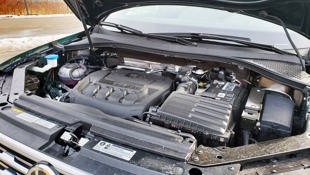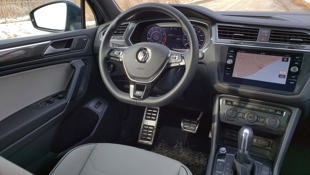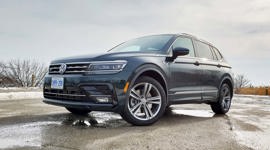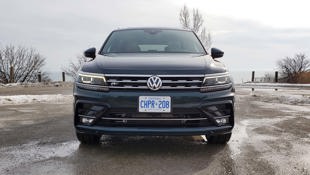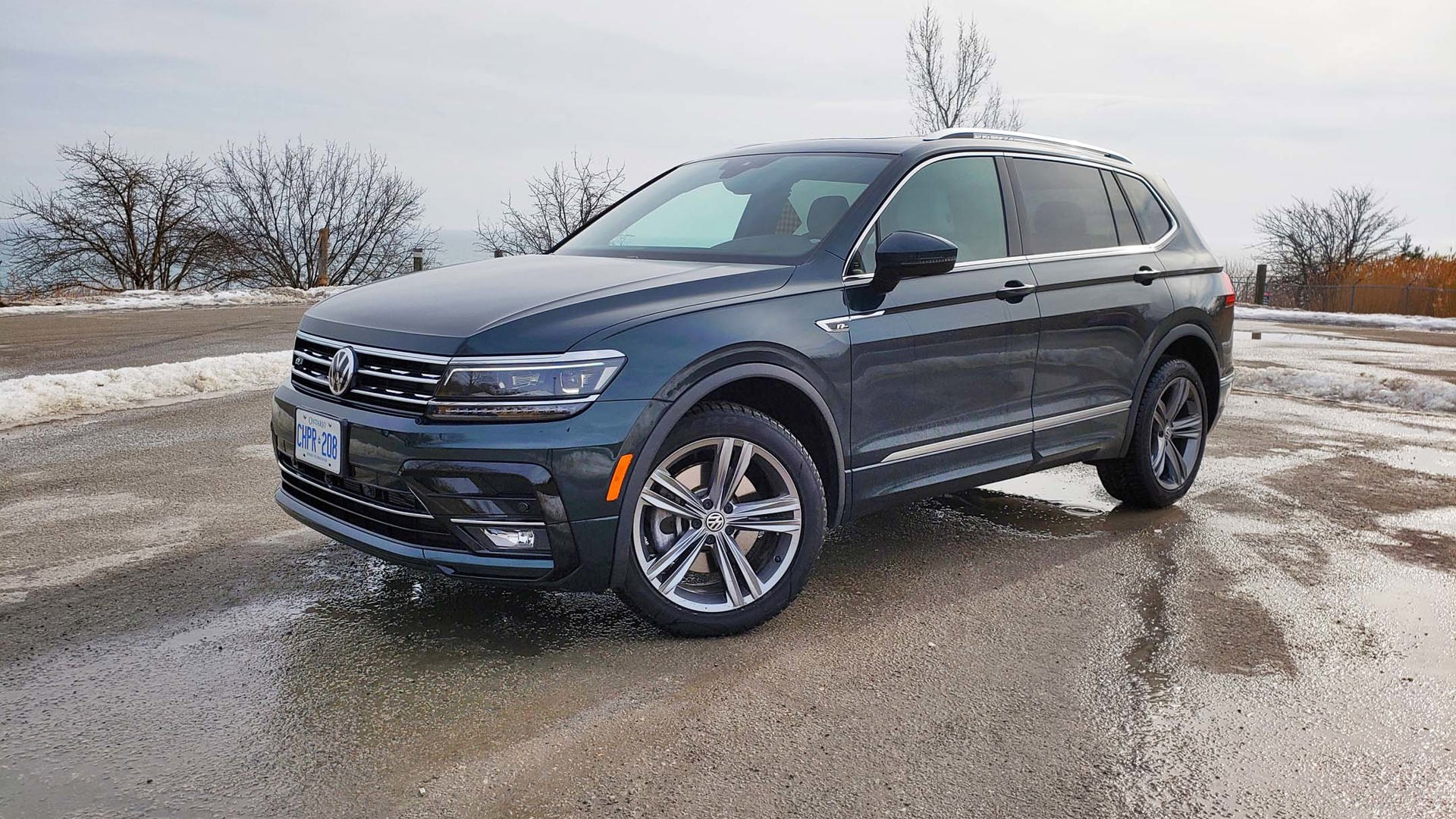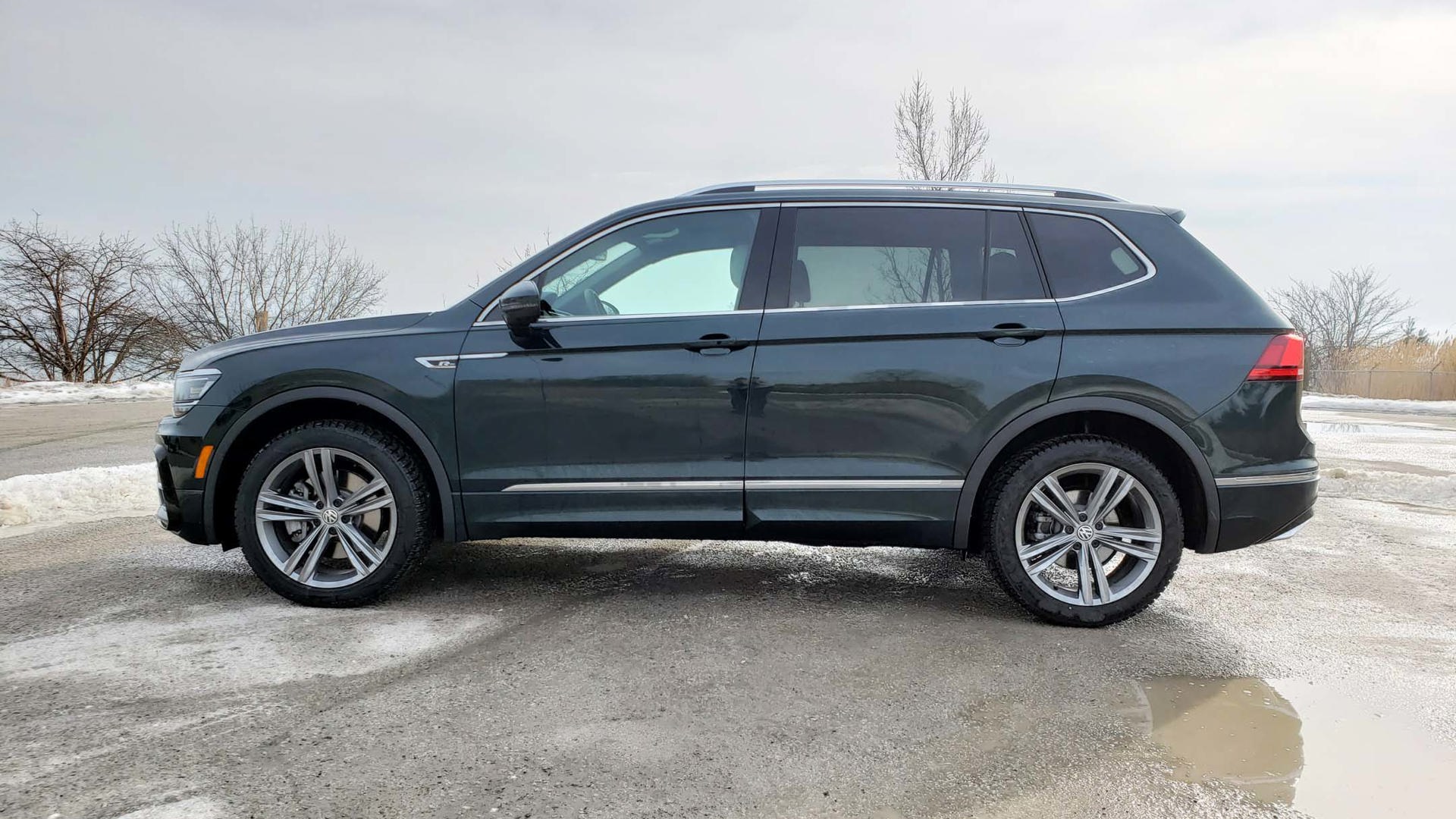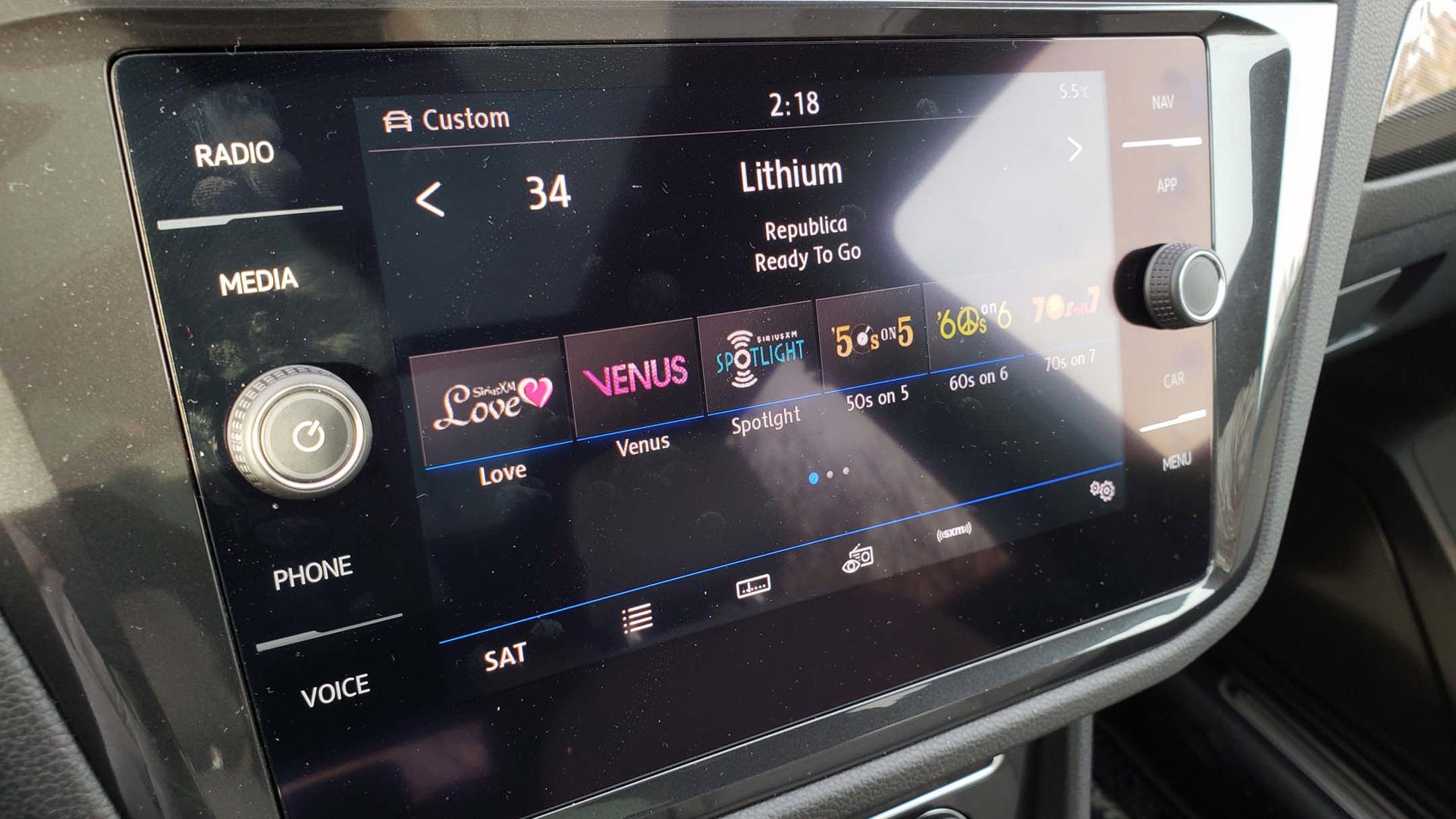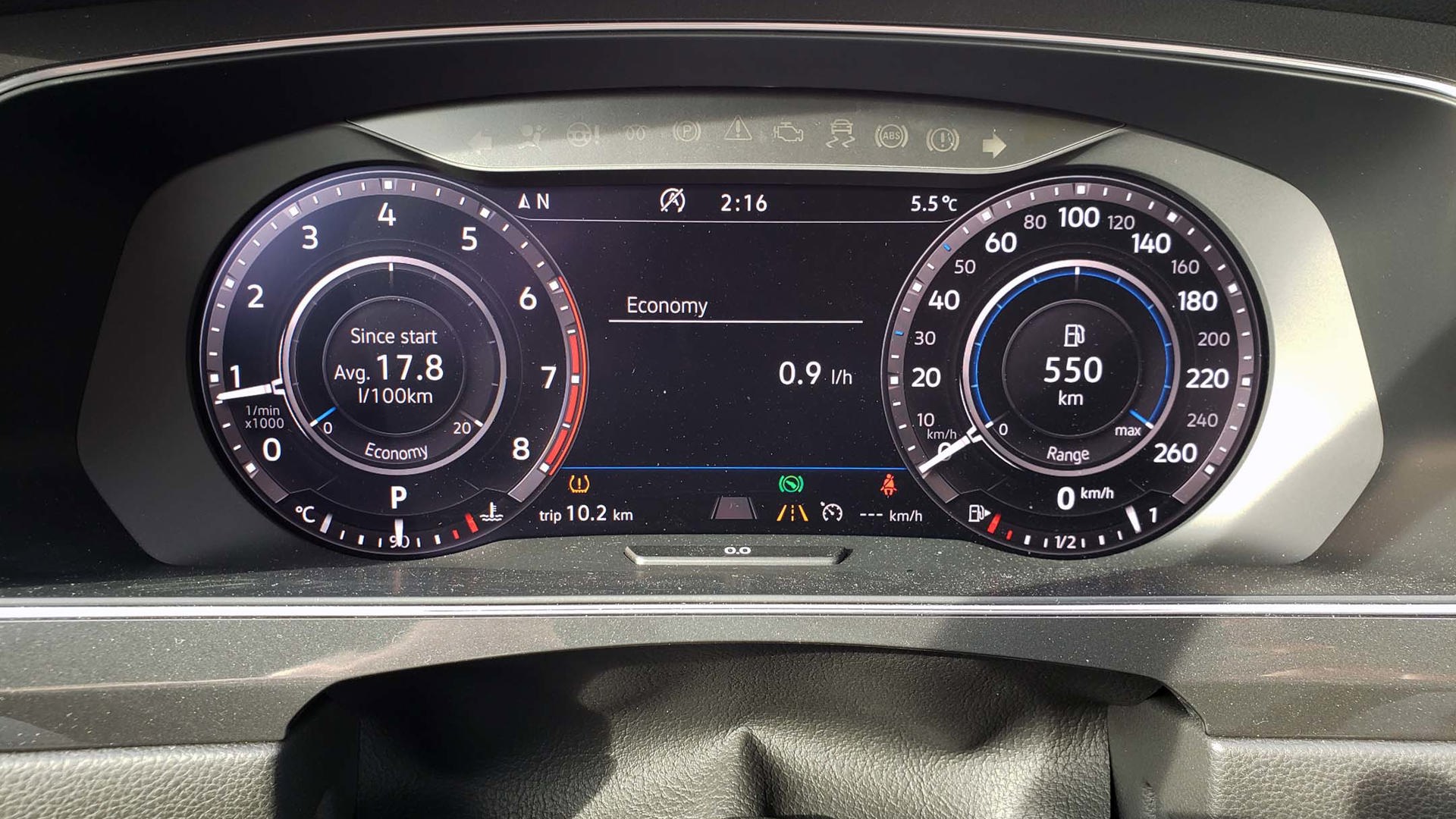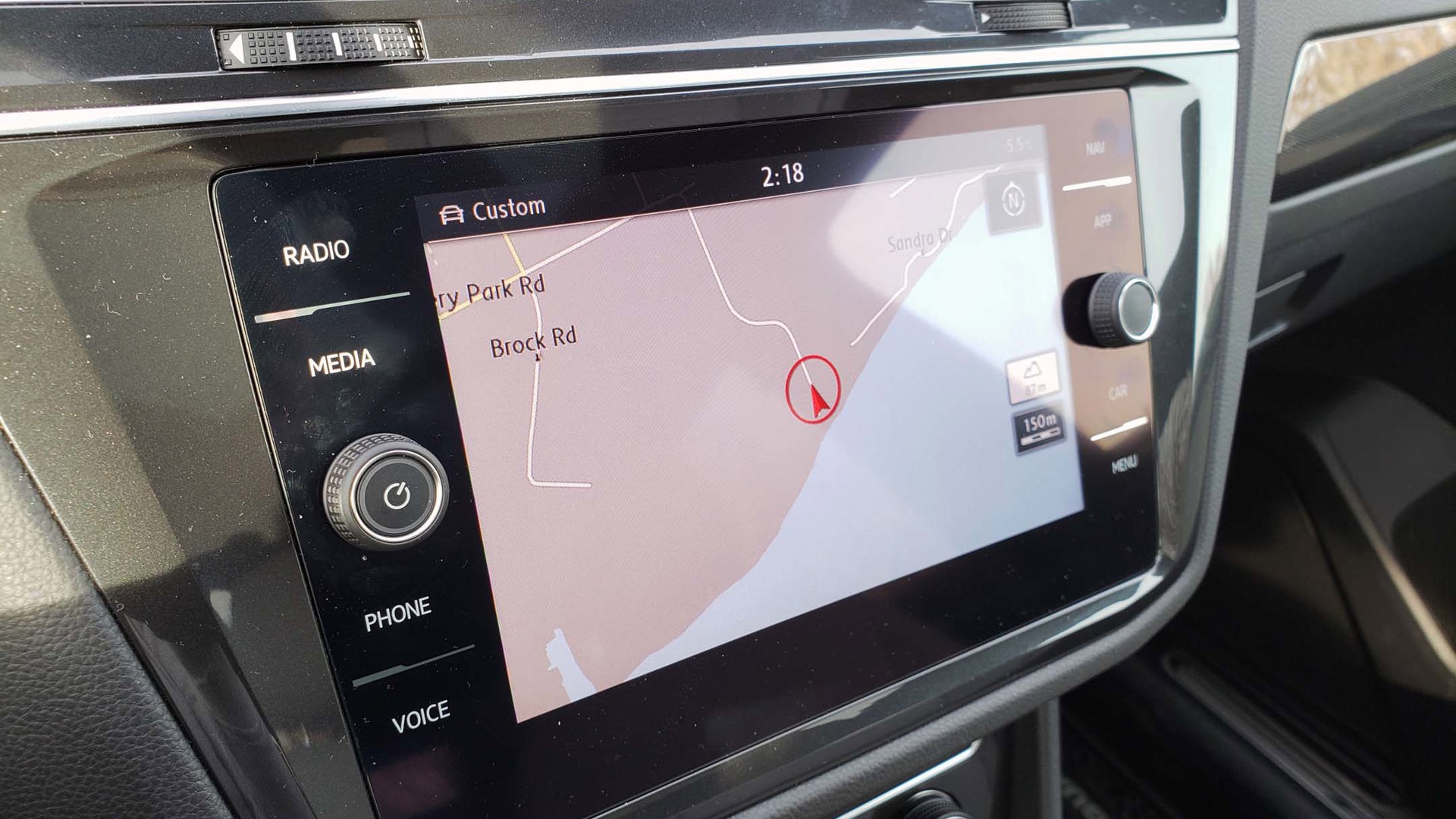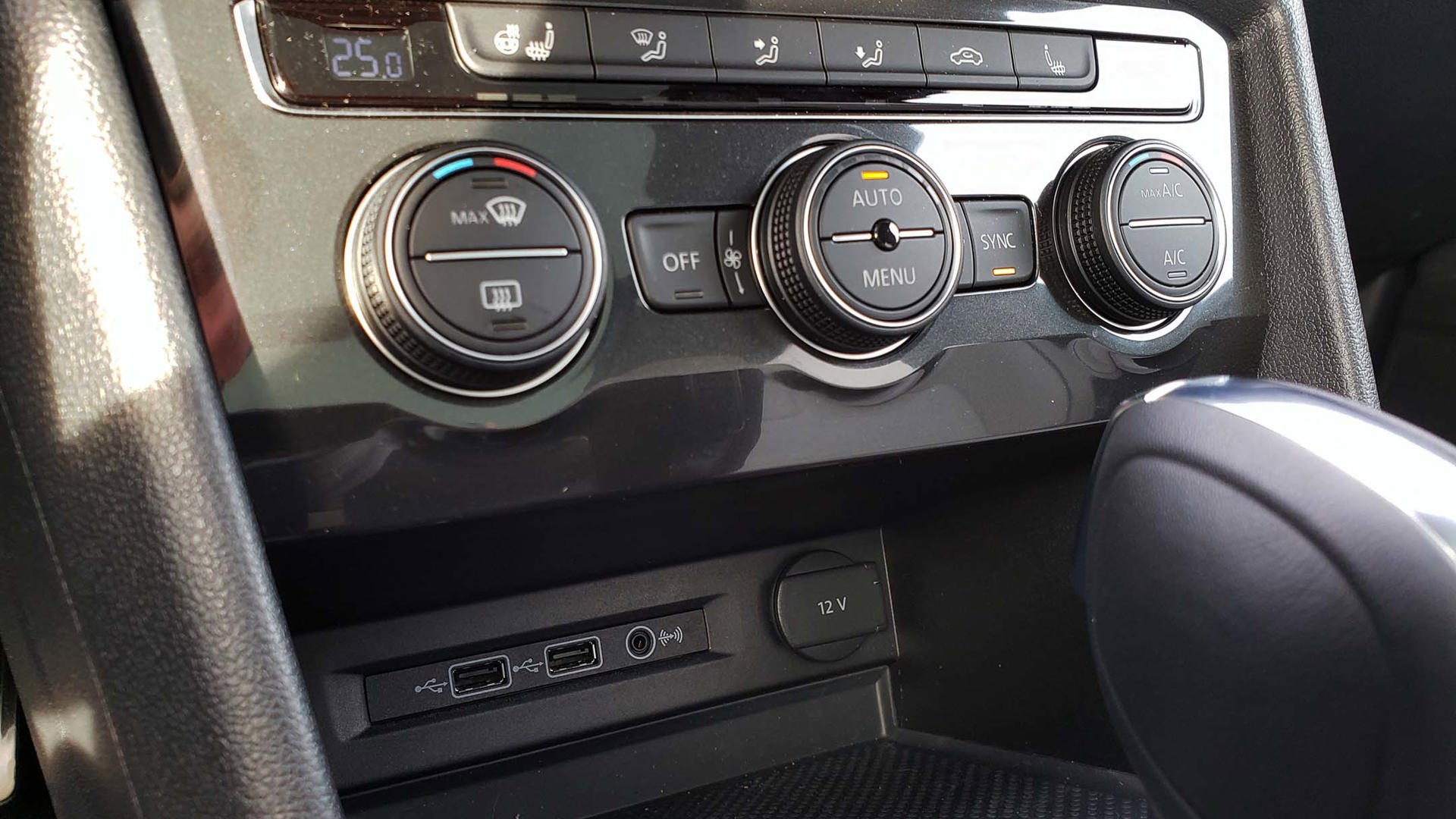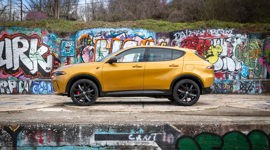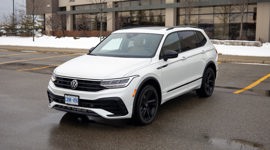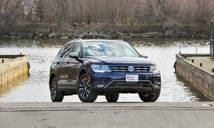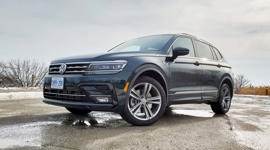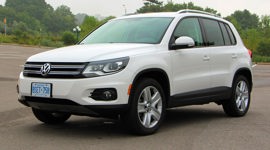 AutoTrader SCORE
AutoTrader SCORE
-
STYLING8/10
-
Safety8/10
-
PRACTICALITY7/10
-
USER-FRIENDLINESS8/10
-
FEATURES7/10
-
POWER7/10
-
COMFORT7/10
-
DRIVING FEEL7/10
-
FUEL ECONOMY8/10
-
VALUE7/10
Frankly, I was intrigued.
There are plenty of vehicles that deeply spark my curiosity, but it happens less often that one of them is a family SUV.
Here in Canada, where the Tiguan is the smallest SUV Volkswagen has to offer in our compact-crossover-crazy market, plus heated features cost extra and there are other quirks to live with, it’s a harder sell.
It started when the second-generation Tiguan was announced by Volkswagen in 2016. International markets still get a short wheelbase version, but here in North America we see the long wheelbase only, which led to a consumer perception that the Tiguan went from being a smaller compact Ford Escape competitor to something better described as a mid-size replacement for the discontinued Touareg – complete with optional third row.
I wondered: could this strategy really work, especially here in Canada where smaller crossovers reign supreme?
Recently, the opportunity came around to see for myself. I was really looking forward to it. It has been a long time since I drove a Volkswagen that I don’t love.
Well, unfortunately, I found one.
I mean, I like it well enough, and it has some redeeming qualities. But in a market that’s currently flooded with options, it also presents with some critical flaws.
Skip the third row
Right off the top: even if you think of it as a 5-plus-2 and you’ll only use the third row very occasionally, take a close look at it before you decide. It’s quite tight, though probably no more so than other similarly sized three-row SUVs. The issue comes more so from the fact that the third row is a greater challenge to get into than average, and the seats take up a lot of real estate. The extra space needed for the additional mechanisms under the rear cargo space raises its load floor, leaving you with less room for groceries or gear whether the seats are up or down. As a result, the three-row Tiguan does neither two-row nor three-row as well as its competition.
The upshot is that it’s best thought of as a larger two-row SUV, putting it in competition with products like the Nissan Murano and the Hyundai Santa Fe. And in comparisons with them, the Tiguan doesn’t always come out favourably.
A single engine and transmission
In the Tiguan, there’s a single engine no matter the price: a 2.0-litre turbocharged four-cylinder that produces 184 hp and 221 lb.-ft. that’s available from 1,600 rpm. It comes paired with an eight-speed automatic transmission and, outside of the entry-level trim, all-wheel drive.
My impression was that I wish it had more meat to the right pedal. Despite having the right stuff on paper, it doesn’t feel especially energetic in practice. This bears out when you look elsewhere in the market: the top-trim engine in the Hyundai Santa Fe is a 2.0-litre turbo four-banger with an eight-speed auto that’s good for 235 hp and 260 lb.-ft. of torque at 1,450 rpm, and the Nissan Murano starts with a 3.5-litre naturally aspirated V6 that makes 260 hp and 240 lb.-ft at 4,400 rpm (albeit through a CVT, and your enjoyment of that may vary). The Tiguan’s engine is fine for an entry-level rental spec, but it would be nice to have something with more bite for those who want it.
On the other hand, if sipping at fuel is a greater motivator for you, then you might prefer the Tiguan’s relatively frugal 10.7 L/100 km in the city, 8.0 on the highway, and 9.5 combined with regular fuel. (My actual figure for the week, which was more city than highway driving, came out to 10.5.) Contrast that to 12.3/9.8/11.2 for the Santa Fe AWD and 11.7/8.5/10.3 for the Murano AWD – though again, the Murano comes with a V6, so the CVT helps to keep the power-versus-fuel ratio lower.
In terms of fuel use versus enjoyment, there’s a lot to weigh here. I’d go for something with more power and take the hit at the pumps, myself. Plus, I don’t particularly enjoy the Tiguan’s handling, which shows a little more body roll than most SUVs of its size do these days, nor do I especially like the note of its engine. If these things don’t matter much to you and you’re a very relaxed driver who would rather save the money on gas bills, the Tiguan might suit your needs well.
Speaking of unpleasant sounds, a propos to nothing: the door locks on the Tiguan make the most almighty clunking sound when they engage automatically at speed that I just about jumped out of my seat every time. This might be one of the more unusual gripes I’ve had with a car in some time, but I feel the need to bring it up because I truly don’t think I could live with it.
R-Line helps handsome looks
One thing I do like about Volkswagen’s current trajectory is the design direction of its SUVs. The Tiguan is the better-looking one over the Atlas in my estimation. Both are nicely upright with squared-off corners and clean lines, but the Tiguan’s less dramatic fender flares and slightly more curvaceous rear end give it a more appealing subtlety. And the R-Line appearance package equipped on this tester puts accents in just the right places, though you need to add a package to the Highline trim to get it.
The interior is nicely laid out as well with a pleasing mix of material and colour. (Though be cautious of this gorgeous grey interior if you wear blue jeans 90 percent of the time as I do, as it takes on staining from them easily.) The materials at this top trim are mostly soft-touch and brightly lit by the large panoramic sunroof. There are some thoughtful usability touches such as a pair of USB ports up front and a simple and easy-to-use button arrangement, including a single button to heat both the steering wheel and the driver’s side seat. Because if you want one, you probably want the other, right? It’s nice not to have to hunt around for both.
Tempting tech features on top trims
I’m a big fan of Volkswagen’s infotainment system, not only because it comes with standard Apple CarPlay and Android Auto – but then again, so do the Santa Fe and the Murano – but also because it has some thoughtful usability features like the ability to flip quickly through SiriusXM stations and see what’s playing before deciding to stop. On-board navigation is available as well, though it’s standard only in the Highline trim and optional in Comfortline.
If you’re willing and able to go all the way up to Highline, there are some trim-exclusive features that are nice to have such as the fully digital instrument cluster, the Fender premium audio system, remote start, LED adaptive headlights, 18-inch alloy wheels with 19-inch available in the R-Line package, power-folding and heated exterior mirrors with memory and reverse tilting, and a power-adjusting driver’s seat with memory, among other features. Highline starts at just shy of $40,000 – not a small spend, but the top trims go higher with plenty of other competitors.
It’s also worth noting that some desirable safety features like adaptive cruise control, lane assist, automatic high beams, and a 360-degree view camera, can only be had as an add-on package on the Highline trim.
If you’re looking at spending less, do note that heated front seats are not standard equipment until Comfortline and will require an additional cost below that price point. Plus, a heated steering wheel is available on the Highline trim only.
The Verdict
In the US, this Atlas plus 5-plus-2 Tiguan strategy makes some sense. Here in Canada, where the Tiguan is the smallest SUV Volkswagen has to offer in our compact-crossover-crazy market, plus heated features cost extra and there are other quirks to live with, it’s a harder sell.
There’s meant to be a smaller SUV coming to North America next year, but there’s no official word yet on what that might look like. Until then, well – thank goodness for the Golf Alltrack.
| Engine Displacement | 2.0L |
|---|---|
| Engine Cylinders | Inline 4 |
| Peak Horsepower | 184 hp |
| Peak Torque | 221 lb-ft @ 1,600 rpm |
| Fuel Economy | 10.7/8.0/9.5 L/100 km city/hwy/cmb |
| Cargo Space | 1,065 / 2,081 L (rear seats up/down) |
| Model Tested | 2019 Volkswagen Tiguan |
| Base Price | $39,575 |
| A/C Tax | $100 |
| Destination Fee | $1,645 |
| Price as Tested | $45,325 |
|
Optional Equipment
Driver Assistance Package ($1,295): Adaptive cruise control with stop and go, lane assist, automatic high beams, 360-degree view camera.
Third Row Package ($750).
R-Line Package ($1,960): 19-inch Trenton alloy wheels, R-Line leather-wrapped heated multi-function sport steering wheel, R-Line exterior design package (bumpers and front grille).
|
|
